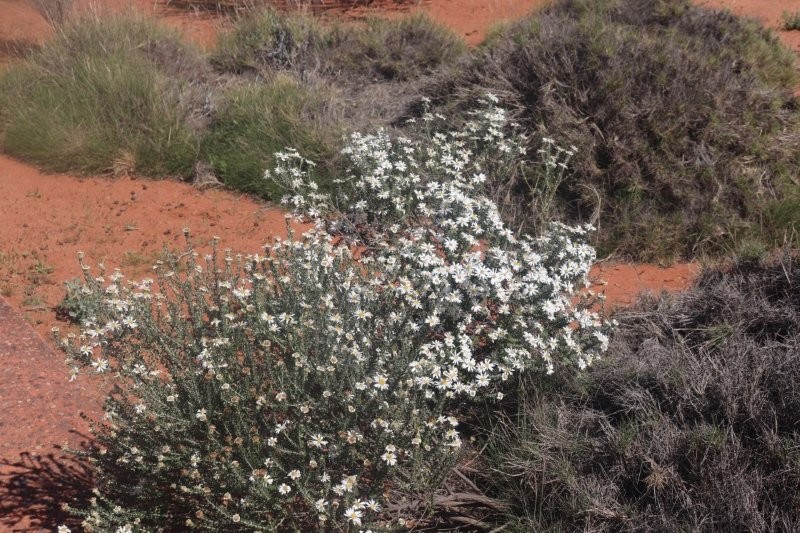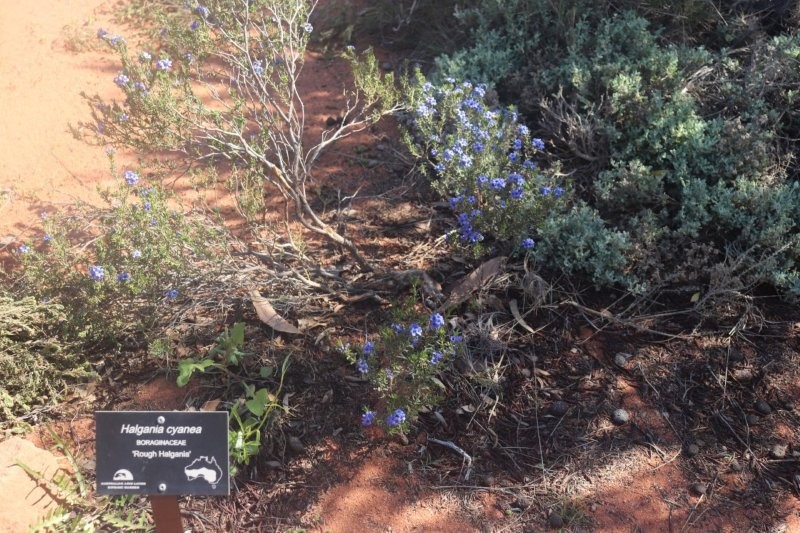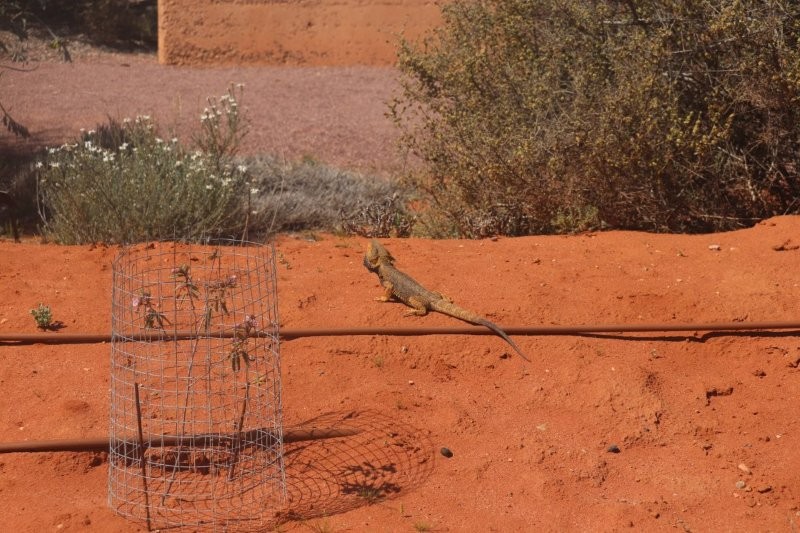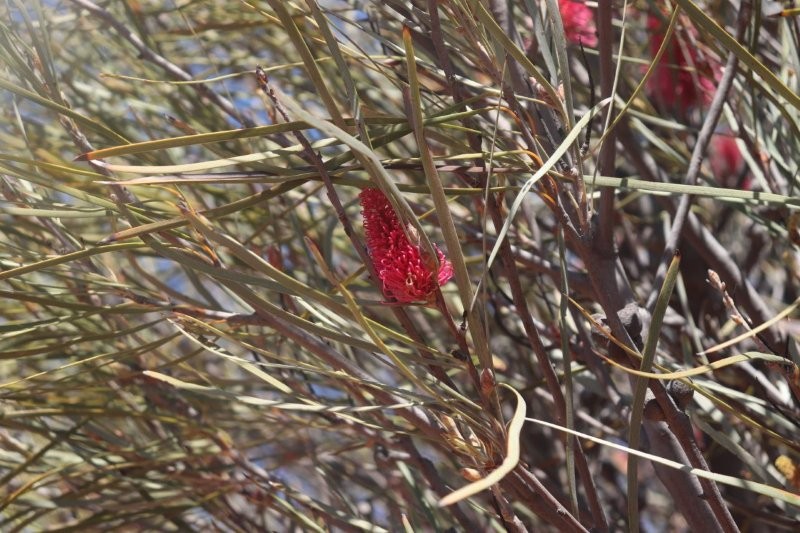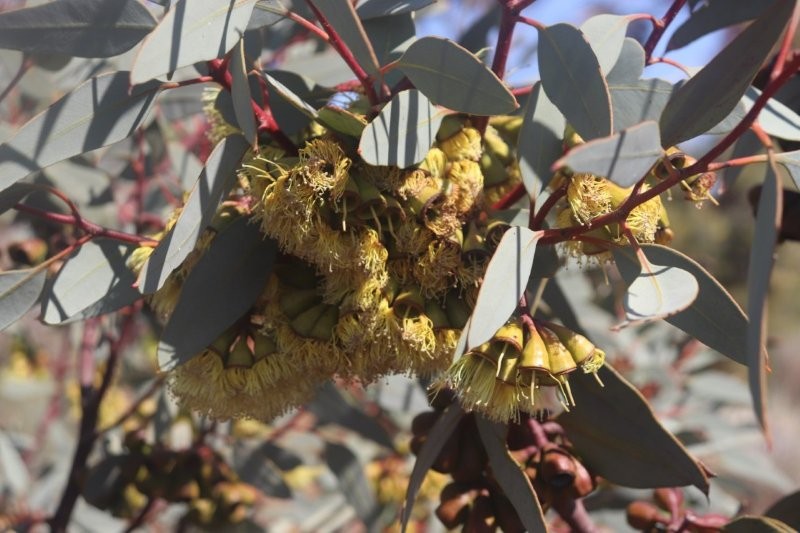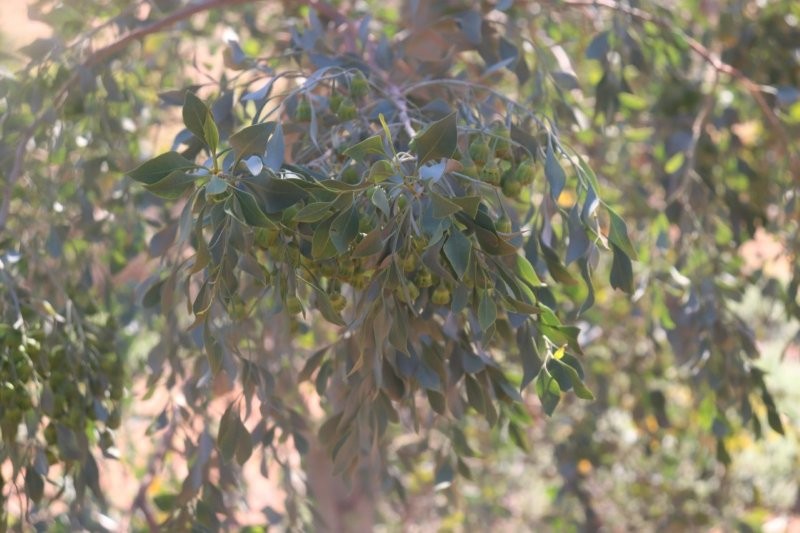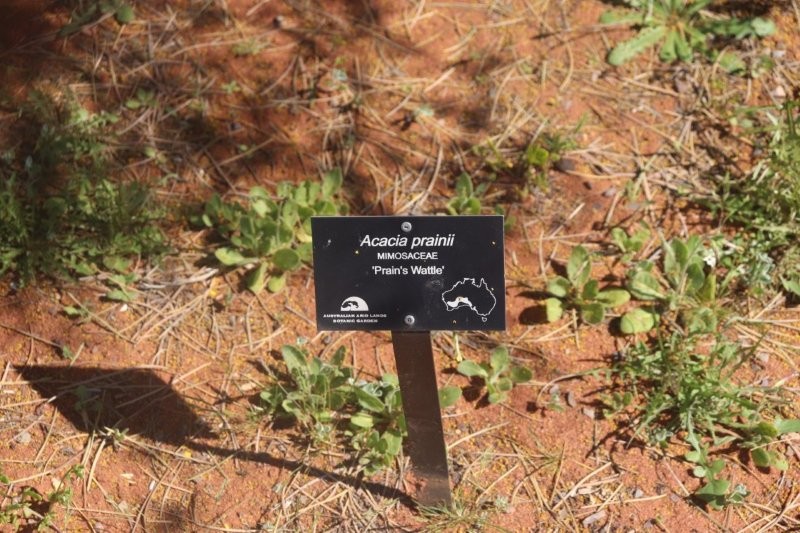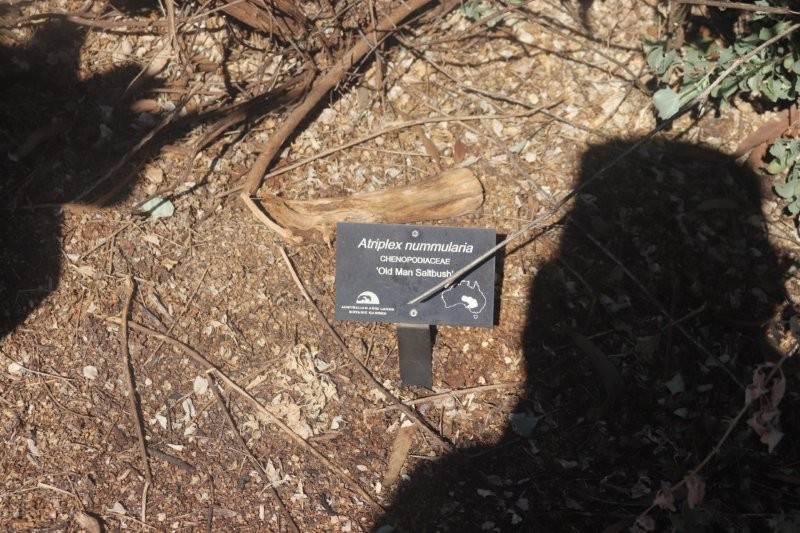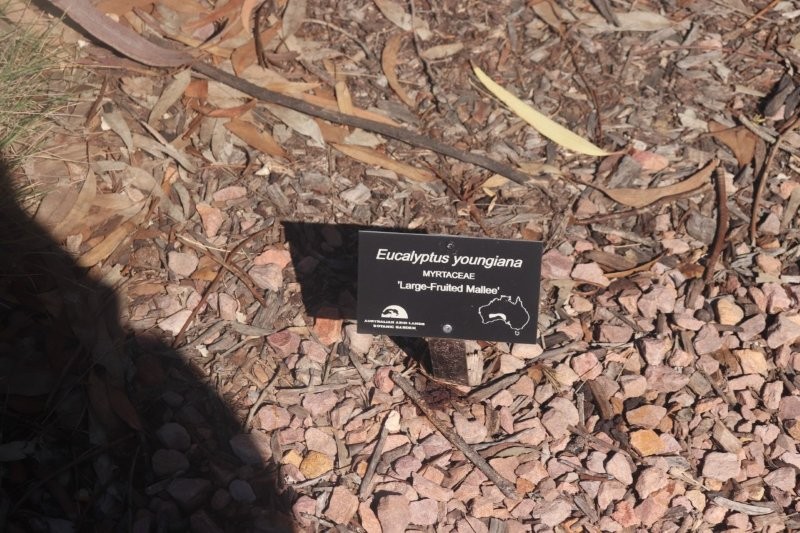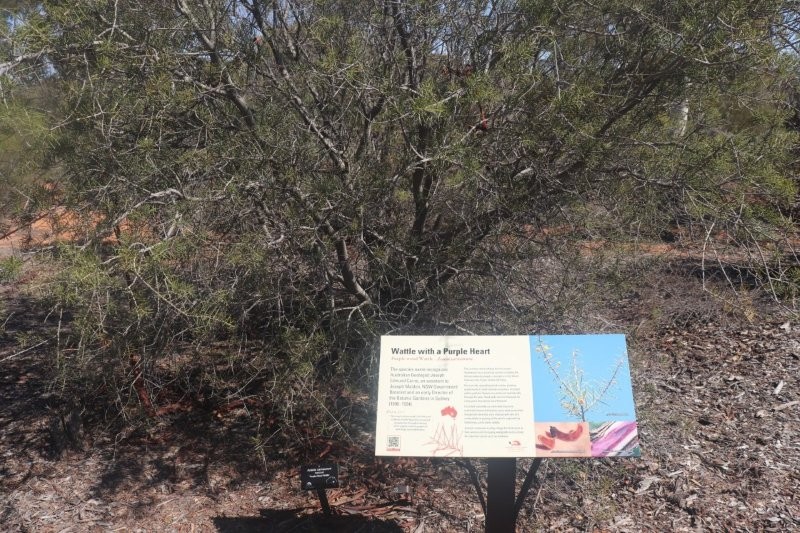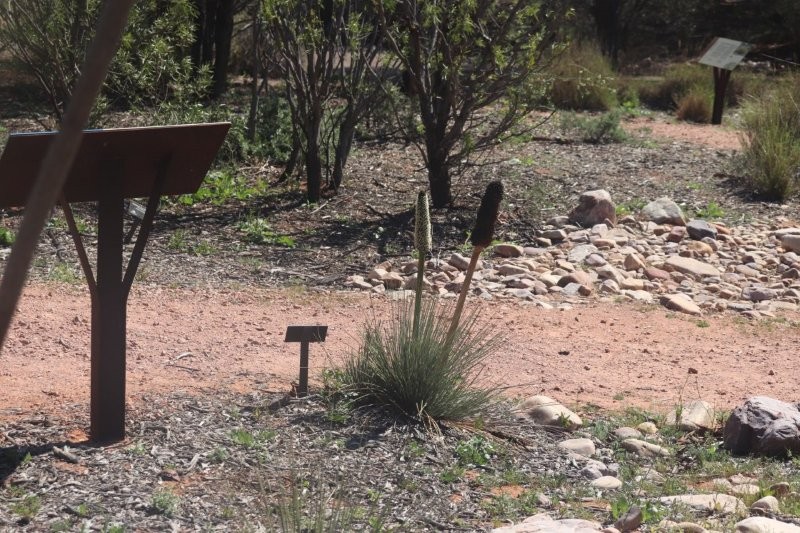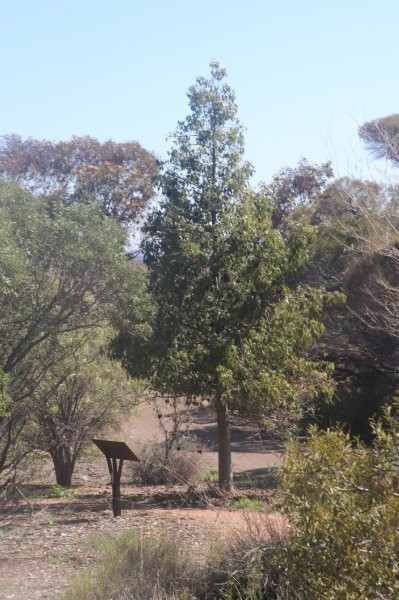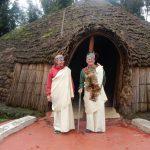There is ‘No Other’
The Clare Valley wine region, Flinders Ranges, Wilpena Creek, Parachilna Gorge, Oodnadatta Track, Coober Pedy, Breakaways and the Arid Lands Botanic Gardens beckoned hundreds of kilometres away—unique, foreboding, yet lovely—there is ‘no other’ Outback!
We set out enthusiastically from Melbourne to Adelaide to embark on the Gekko tour to the outback. Little did we expect that we would nearly succumb to the cold as one of the strongest cold fronts swept across the south of the country. We had seen the ABC programme on the mass migration of birds to the lake, feeding on the shrimps that crept out of the salt coated shores. We could not wait to skim over the shores of the lake and to see the Macumba Creek inlet.

Drive to Adelaide
We travelled to Ararat, Stawell and Horseham after leaving Melbourne at 2 pm. We couldn’t believe how green the countryside had become after the devastating drought in Western Victoria. The street and silo art in Horseham was unsurpassable!
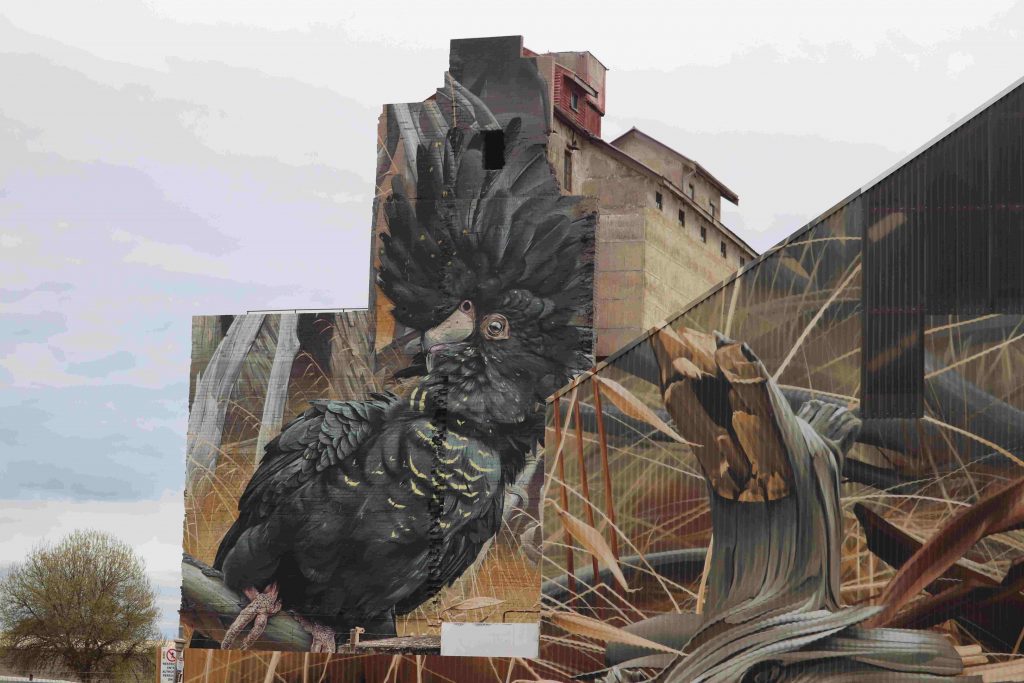
The silo art was breathtakingly realistic!
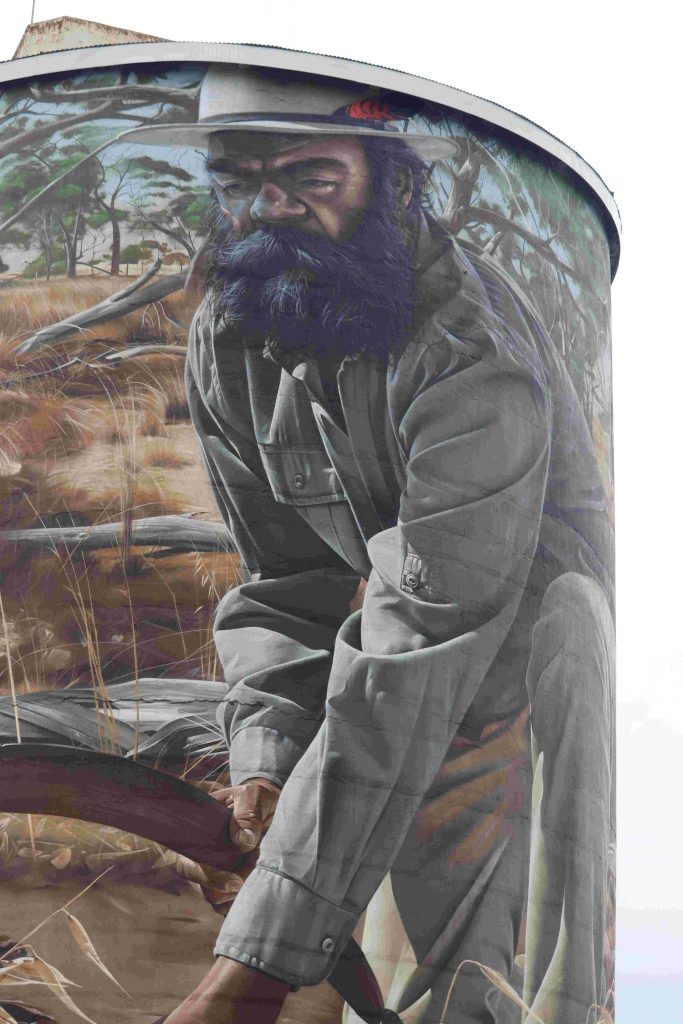
Coonalpyn
The silo and mural art in Coonalpyn was as spectacular as that in Horseham. We spent a delightful hour there.
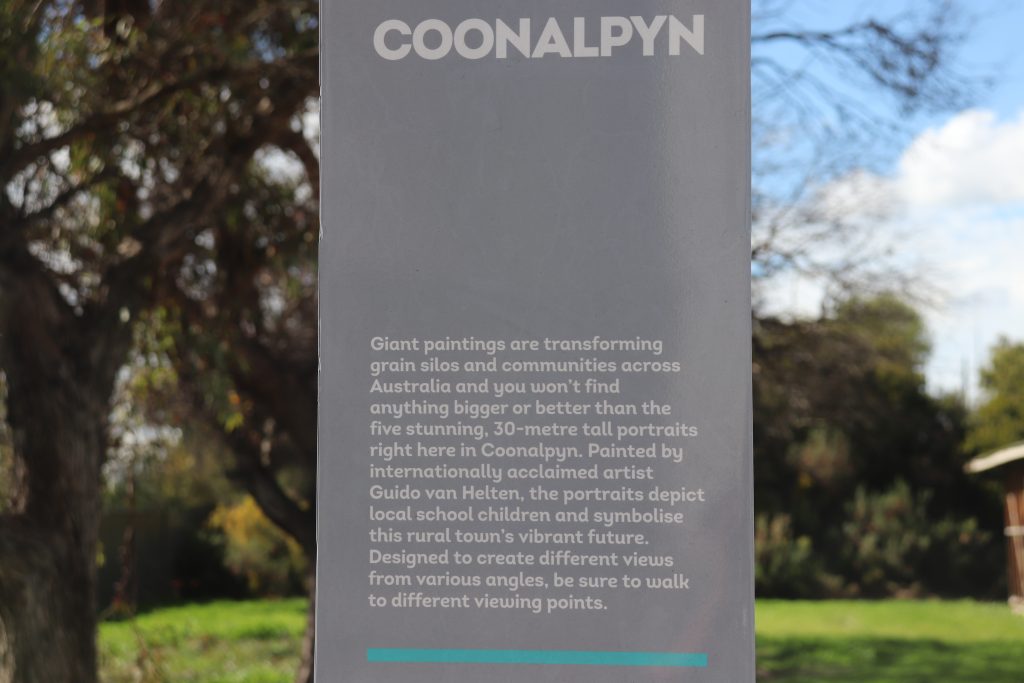
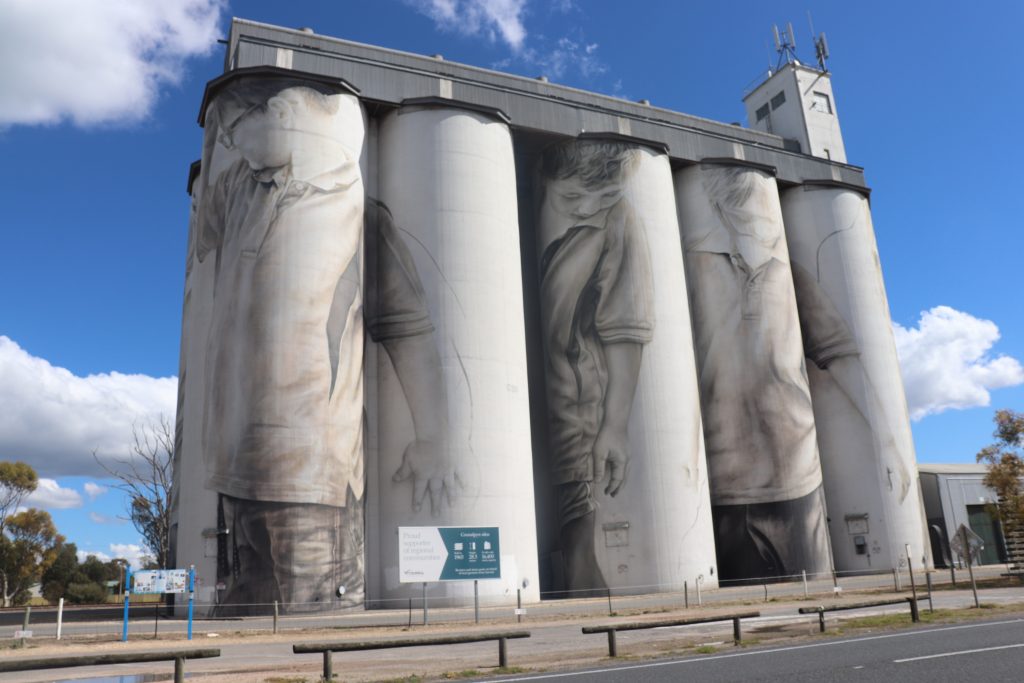
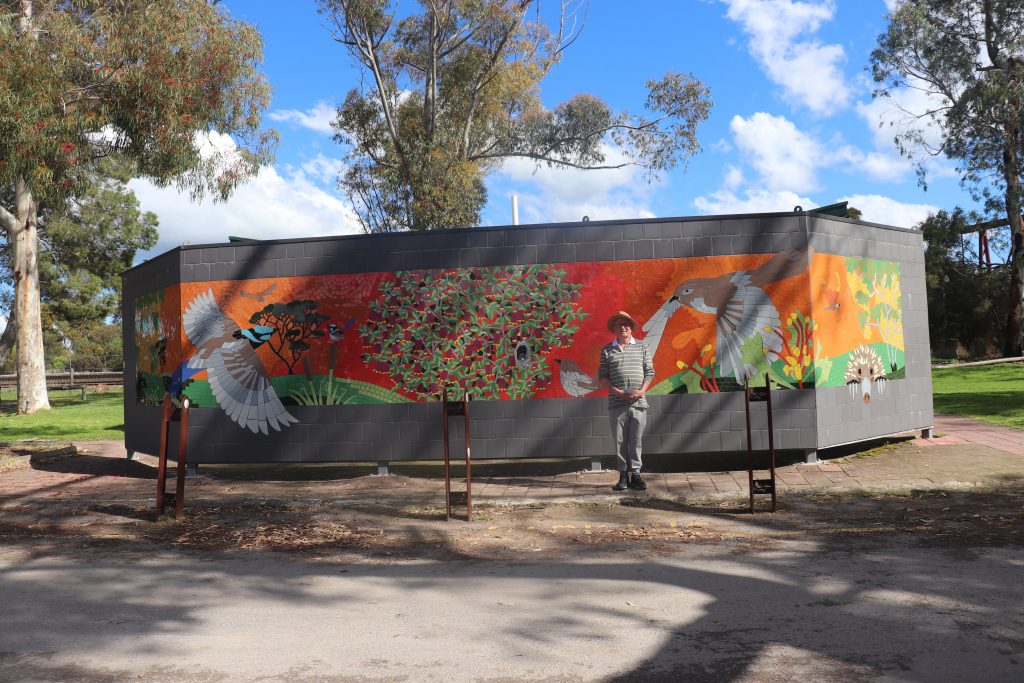
Hahndorf
After many hours of hugging the asphalt, skimming the beautiful, sculptured countryside, admiring the wattles showing their gold and the modest eucalypts showing their spring flowers, we reached Hahndorf, a small town in the Adelaide Hills. Our European DNA delighted in the town settled by 19th-century Lutheran migrants and the original German-style architecture and artisanal food. We learned that this was the stamping ground of the German-born landscape painter Sir Hans Heysen. We were excited that we were going to travel into the outback to see what inspired Hans Heysen.
We spent two nights at the Alba Hotel in Adelaide and set off the next morning on our tour, our first stop, the Seven Hills Winery in the Clare Valley.
Seven Hills Winery
We were to be picked up at 7.00 am by Paul, our tour guide, a good guide of 35 years of experience. Paul had a very slow start. We were convinced that his name was Xavier, but could not get a word out of Paul during the first couple of hours of travel. He was listening to one of Adelaide’s radio station Paul was a no-nonsense, walking encyclopedia kind of guy who could rattle off dates and facts about the outback without a break in his train of thought. His pride and joy was the tour bus, and we heard that he built classic cars, specialising in the 1950s Chrysler (I recall). These skills were used to build the tour bus, so we were in good hands.
But he had a very long drive ahead of him and a strict schedule to meet, so he expected good herding behaviour—no catlike behaviour! Dedrie and I were the first to draw his ire. I was sure that I had packed our fruit and sandwiches in my rucksack. Dedrie was packed and ready to go at 6:45. She asked me to make sure our snacks had been packed. With time running short, I started to search through all my luggage. I can’t find the snacks—I shouted! Dedrie left her final packing and started to search as well. Everything was turned upside down. Panic and inefficiency set in. I rushed down to the car, parked in the hotel garage for the period we were to be away. Nothing there. I rushed back. The time had crept up to 6:57. In desperation I upended the rucksack. There the snacks were—neatly stuck in the lower recesses of the bag. ‘I have it’, I shouted and sprinted downstairs to the foyer with Dedrie shouting behind me that she will be down, ‘In five!’ The coach was packed. Everyone had claimed their seats. Paul, the tour guide, was agitatedly mumbling, ‘There are two missing.’ Dedrie turned up at 7:10, hauling her luggage through the foyer and outside to the tour bus. Paul waited for another 15 minutes before realising that he was to pick the last person up at Melrose.
We set off in the pouring rain with our morose tour leader, who we all thought was Xavier. Dedrie apologised to the rest of the group and a grumpy Paul that I was the cause of the belated departure. It would take at least half a day before the atmosphere thawed and we all became best mates. One ot the reasons for the chilly atmosphere on the bus, was that one of the members, sitting next to the window, had water trickling down his neck from an unsealed leak in the roof. Paul had to stop the bus, get out and ‘attend’ to the leak in the pouring rain.
Dedrie asked the guide, ‘Xavier, are we nearly there?’ I’m actually Paul, the guide said. We were cold and bemused. ‘Hopefully’, we thought, ‘Paul was going to come out of his temporary incommunicado phase!’
Seven Hills Winery
We stepped off the bus into bitterly cold conditions, inadequately dressed for the occasion. We entered the St. Aloysius Church, followed by a desperate visit to the toilet and then to the crypt. Still, we had enough time to appreciate the beautiful church interior and the conservatively hung paintings along the walls.
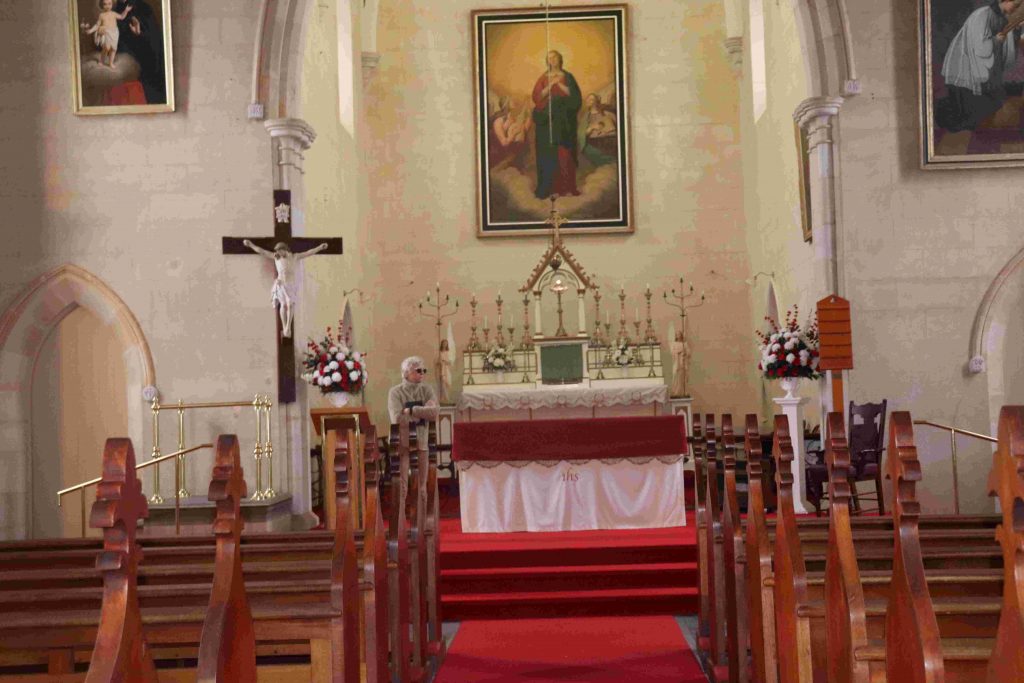
Paul’s level of verbosity increased somewhat as we headed north to the Clare Valley, renowned for its excellent wines, with some time to visit the Seven Hill grounds, the oldest winery in the region, established by the Jesuits in 1851.
The crypt is the resting place for Sevenhill’s most notable Jesuits. As the only parish church in Australia with a crypt, this final resting place for Jesuits is a historical treasure. The names that are carved into the slate and marble headstones that line the vault refer to the Jesuits who significantly contributed to the development of Sevenhill and its missions from 1851, when the property was settled.
From 1851, 42 Jesuits were interred in the Saint Aloysius crypt. The first to be placed there was Brother George Sadler, who died in 1865, aged 51, when he was hit by a flying fragment of rock while quarrying the property to obtain stone for the building of the Church.
Other notable burials are Brother Schreiner, aged 79, the first of the seven Jesuit winemakers, Brothers Lenz, Storey, Hanlon, and John May.
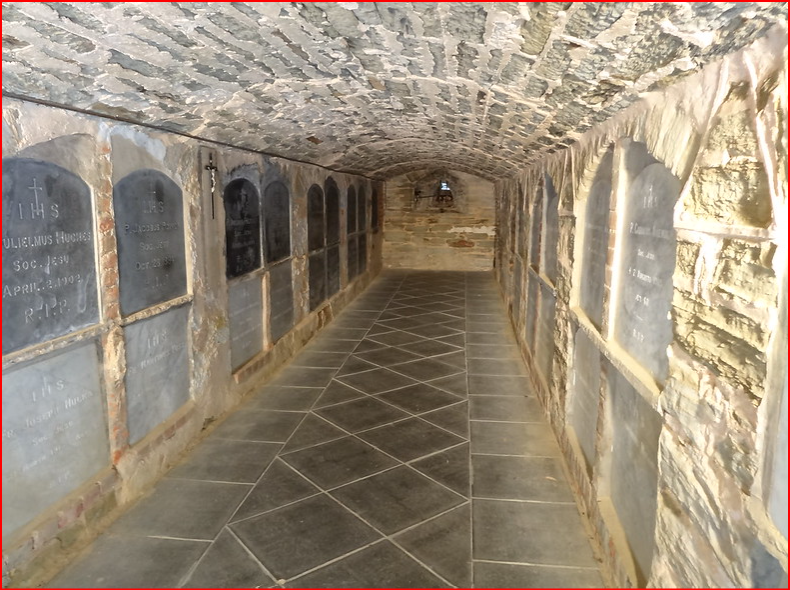
Laura
A coffee and toilet stop at Laura was next, where we huddled next to the most remarkable Diesel heater. I struggled to get Dedrie away from the heater where she was trying to warm her numbed hands.
Stepping outside, we saw the statue of C J Dennis—’ the laureate of the larrikin,’ popularising Australian slang in literature and who wrote: ‘The Songs of a Sentimental Bloke.’
An’ ev’ry song I ’ear the thrushes sing
That everlastin’ message seems to bring;
An’ ev’ry wind that whispers in the trees
Gives me the tip there ain’t no joys like these:Livin’ an’ lovin’; wand’rin’ on yer way;
Excerpt: ‘The songs of a sentimental bloke
Reapin’ the ’arvest of a kind deed done;
An’ watchin’, in the sundown of yer day,
Yerself again, grown nobler in yer son.
Towering four metres over the lawned median strip in Laura is the sculpture of Australian poet C. J. Dennis, in the Laura CBD area.
Created by Adelaide artist Dave Griffiths, the steel and copper structure is of Dennis holding a pipe and reading a book of his verse. The detail in the sculpture is amazing, given the materials used. The statue stands as if reading, pondering and recalling “Of the long-gone Laura days”
LAURA DAYS
From: laura days
Dreaming to-day in a forest green
Where the great gums rake the sky,
My thoughts turn back to another scene
And to old days, long gone by;
To a land of youth, and a youth’s employ,
And – to filch another’s phrase –
To the men who were boys, when I was a boy,
In the long gone Laura days.
C. J. Dennis’s boyhood was spent in Laura, as his parents owned a former hotel. Some of Dennis’s poems richly describe Laura’s landmarks. His first published poem appeared in a local newspaper.
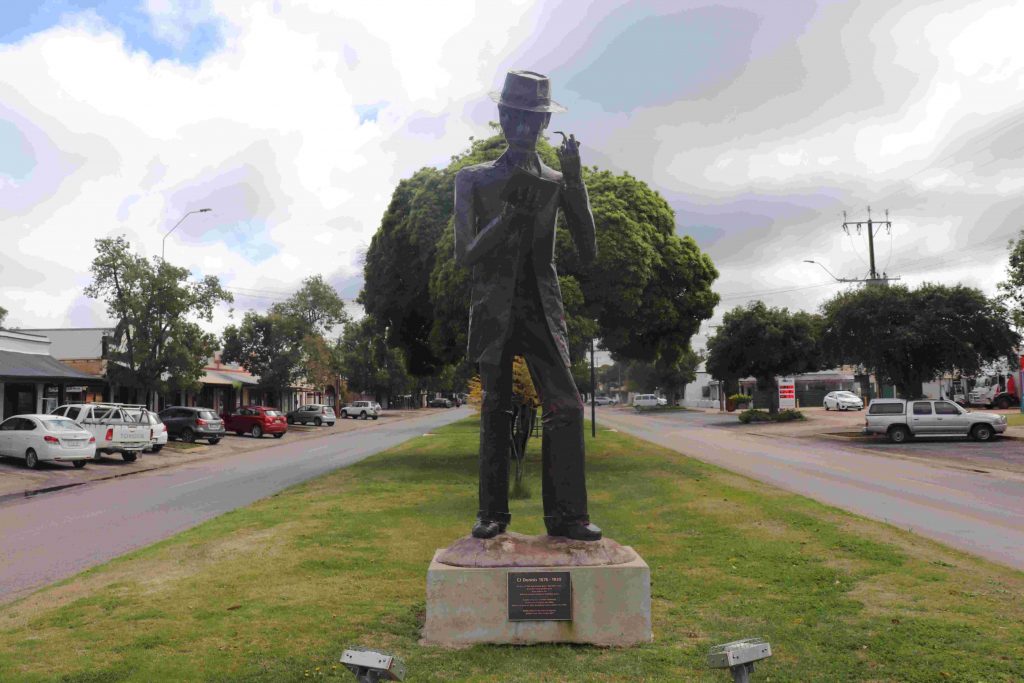
Silo Art—Wirraburra
Paul became enthusiastic about the Viterra Silo art in Wirrabara. Smug, the silo artist, worked wonders on the 28-meter-high canvas. He worked nonstop over a period of three weeks to complete the stunning artwork.
Smug converted the simple silo buildings into veritable masterpieces rising out of the landscape, beckoning to tourists to extricated cameras and phones for pictures from all angles.
Smug employed a boom lift to work at those great heights. Using precise strokes and meticulous geometry across the massive surface area of the silos, he gave vibrant life to his subjects.
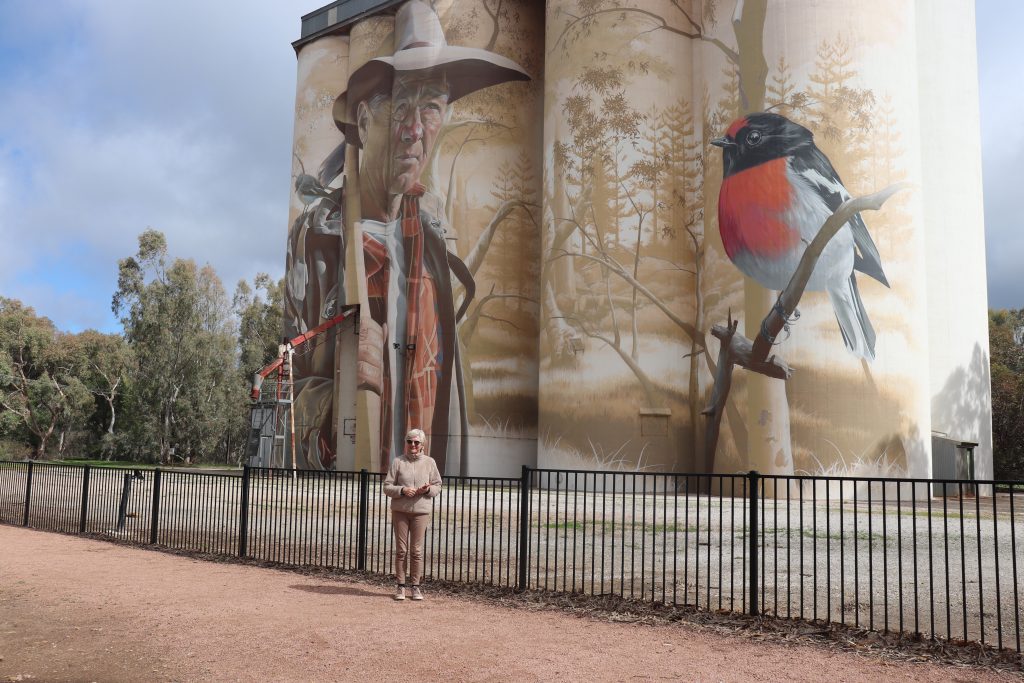
Melrose
We then travelled to Melrose, a lovely little town nestled in the foothills of the Flinders Ranges. On the way, the sun filtered through and lit up the yellow canola fields with Mount Remarkable in the background. Our eyes followed Paul, our laconic guide’s hand, as he mumbled, ‘Mount Remarkable.’ We were travelling too fast past yellow field after yellow field to take any decent photos. We had to guess that the fields were Canola! Paul had obviously seen enough of yellow Canola fields to dissuade him from addressing our agricultural enquiries. We did hear someone from the back exclaim, ‘What are these beautiful yellow fields?’ Someone countered, ‘Mr. Google!’

The bus passed through the delightful countryside—too quickly. Photos taken from the bus captured dry riverbeds and creeks heralding our approach to the ‘arid lands’.
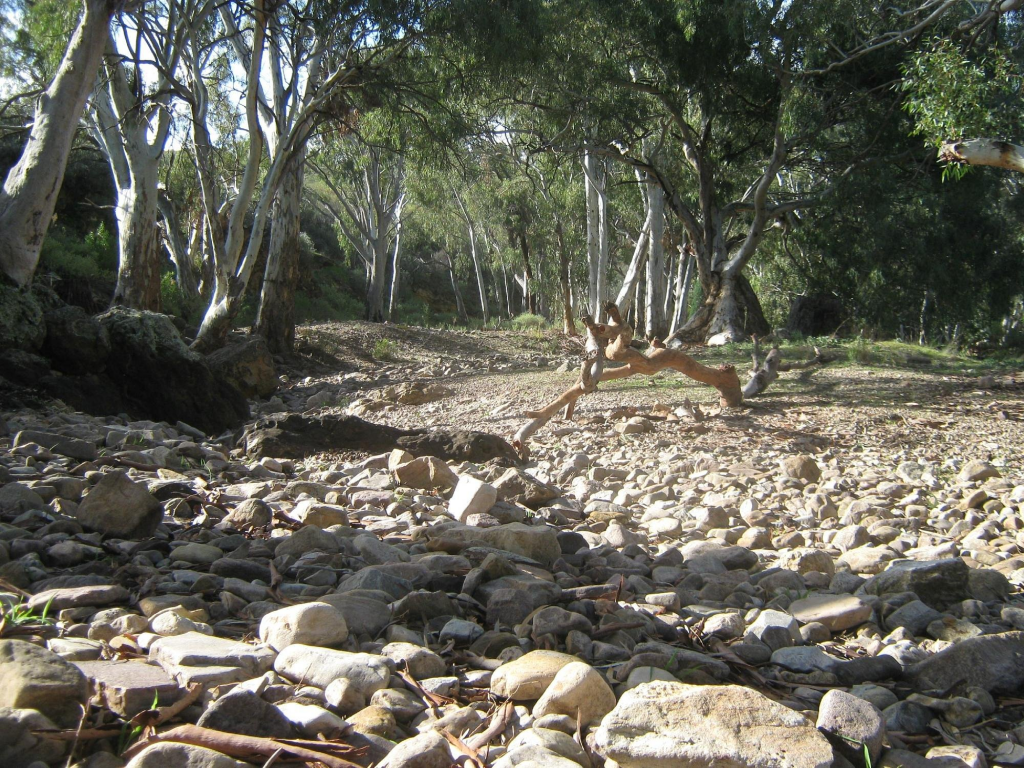
Quorn
Driving further north, we arrived at Quorn for lunch at the Quandong Cafe. The bitterly cold wind had subsided, but the rain still fell in patches. The lunch was very good, a home-made quiche and salad—served in ‘old school’ South Australian style. After lunch, we made it back to the coach parked near the Railway Station—the junction of the Sydney-Perth and Adelaide-Darwin railway systems in 1917. Dedrie bought a beautiful locally handmade silk scarf.

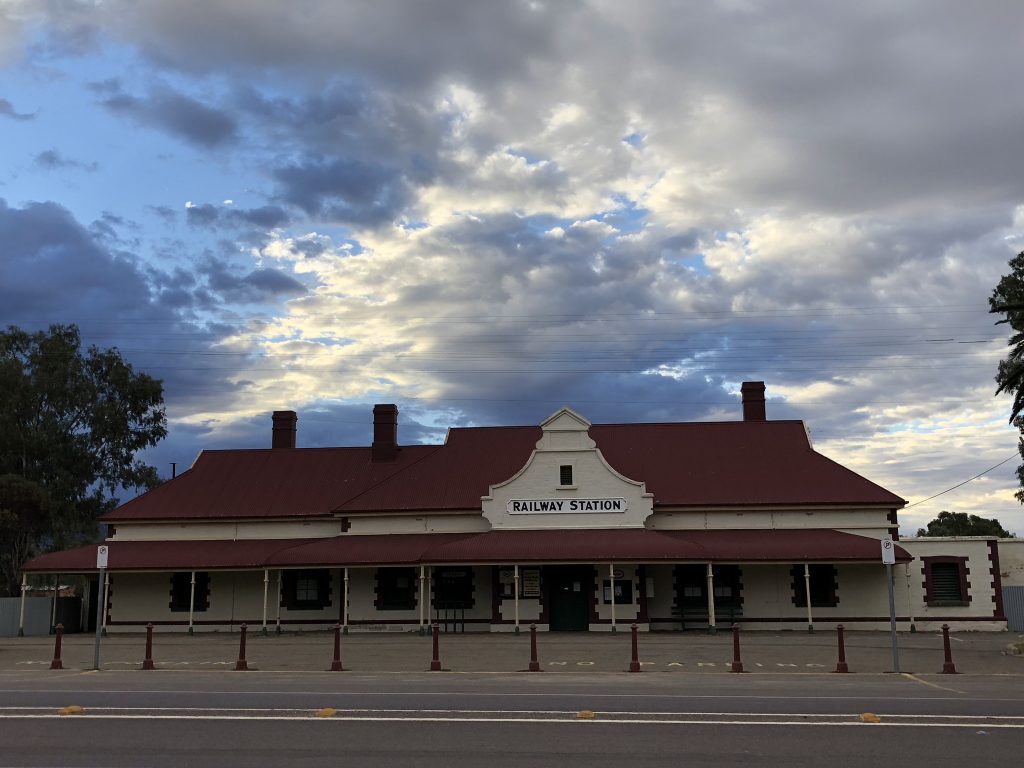
There are numerous semi-successful or partially unsuccessful rail projects in South Australia. Mining, water, vast distances and incompetent colonial government officials with grandiose, impractical ideas were the responsible drivers for these projects. One of these was the Pichi Richi Railway. The details of its inception and final demise are as follows—from Wikipedia.
Imagine the rugged beauty of the Flinders Ranges, where the relentless sun casts a warm glow over the ancient landscape and echoes of history weave through the hills. It was in this dramatic setting that a remarkable railway line was born, initially constructed to support the bustling mining activities in the region. The journey began in 1878 at Port Augusta, cutting through the stunning Pichi Richi Pass, with its grand opening at Quorn in 1879, and finally reaching its first terminus at Government Gums—now known as Farina—in 1882.
But that was just the beginning! The line swiftly extended its reach, connecting to Marree (then called Hergott Springs) in 1884 and Oodnadatta by 1891. With dreams of becoming a north-south transcontinental artery, it proudly adopted the name Great Northern Railway in 1882. Fast forward to 1926, and the Commonwealth Railways took over, rebranding it as the Central Australia Railway—a name that may lack flair but carries a legacy of resilience.
This 1225-kilometre (761-mile) marvel, which stretched to Stuart (renamed Alice Springs in 1930), became much more than just a railway; it was a lifeline for isolated outback communities. During World War II, it proved invaluable for transporting essential supplies, while also playing host to the iconic passenger train, The Ghan—a journey that has captured the hearts of countless travellers.
As the years passed, the Pichi Richi section transformed into a vital feeder route for the east-west Trans-Australian Railway from 1917 to 1937. Its steep gradients posed a significant challenge, largely due to the refusal of decision-makers (politicians and public servants) to heed the advice of surveyors and engineers. Instead of opting for a more straightforward path west of the Flinders Ranges, they prioritised servicing prospective copper mines and the anticipated agricultural riches of the area.
What was once a headache in operational terms has now evolved into a delightful escapade for modern travellers. Today, passengers aboard the trains marvel as powerful locomotives work tirelessly to conquer the daunting grades, transforming the arduous task into a thrilling experience that celebrates the line’s storied past. The railway, once a commercial venture, has turned into a nostalgic journey where history meets adventure in the captivating outback of Australia.
Wikipedia contributors. (2025, August 16). Pichi Richi Railway. Wikipedia. https://en.wikipedia.org/wiki/Pichi_Richi_Railway?oldformat=true
Hawker and the Flinders Ranges
On our way to the Flinders Ranges, we stopped in Hawker to visit the Jeff Morgan Gallery—an unforgettable experience. This is a gobsmacking experience in the most unexpected place; 3D works of genius!
Jeff Morgan’s exhibition was an unforgettable adventure. The stunning displays are not just visual; they are immersive experiences of beauty that transport one to the Outback. Every 3D Outback scape invited us to dive deeper into the beauty and unique wonder of the landscapes prepared with such love and sensitivity.
Jeff was born in 1956 at Laura, a small country town at the southern end of the Flinders Ranges in South Australia. He grew up in nearby Wirrabara Forest where he attended the local primary school and then Gladstone High School showing a keen interest in, and a natural talent for, artwork.From the time he left school until 1990, Jeff did not draw or paint, but was busy working at the Wirrabara Woods and Forest Department and in his orchard. During this time he also married Miriam, brought up 4 sons, became a licensed painter-decorator and owned a hardware store in Laura. In 1990 Jeff experienced a change of direction and developed his skills as a fine artist.
Although Jeff did not receive any formal art training, he has studied by reading, visiting art galleries and observing the painting techniques of other artists. eff went on to become the Artist-in-Residence at Rawnsley Park in the Flinders Ranges for a period of three years. During this time Jeff’s natural ability to paint was further developed, often encouraged in his work by other artists who would visit to paint the Flinders Ranges. Jeff’s preferred painting medium is acrylics.
The rugged and dramatic scenery of the Australian outback and the Flinders Ranges continues to inspire Jeff to capture its beauty on canvas in his very unique and detailed style.Creating the Wilpena Panorama was a God-given vision, after having viewed a round panorama painting, the work of artist Henk Guth, in Alice Springs (since burnt down). It would be 10 years before Jeff’s panorama building and painting were completed in 2003. With the creation of his panorama, Jeff has become one of a small number of panoramic artists in the world officially recognised by the International Panorama Council (IPC).
Wikipedia contributors. (2025, August 16). Pichi Richi Railway. Wikipedia.
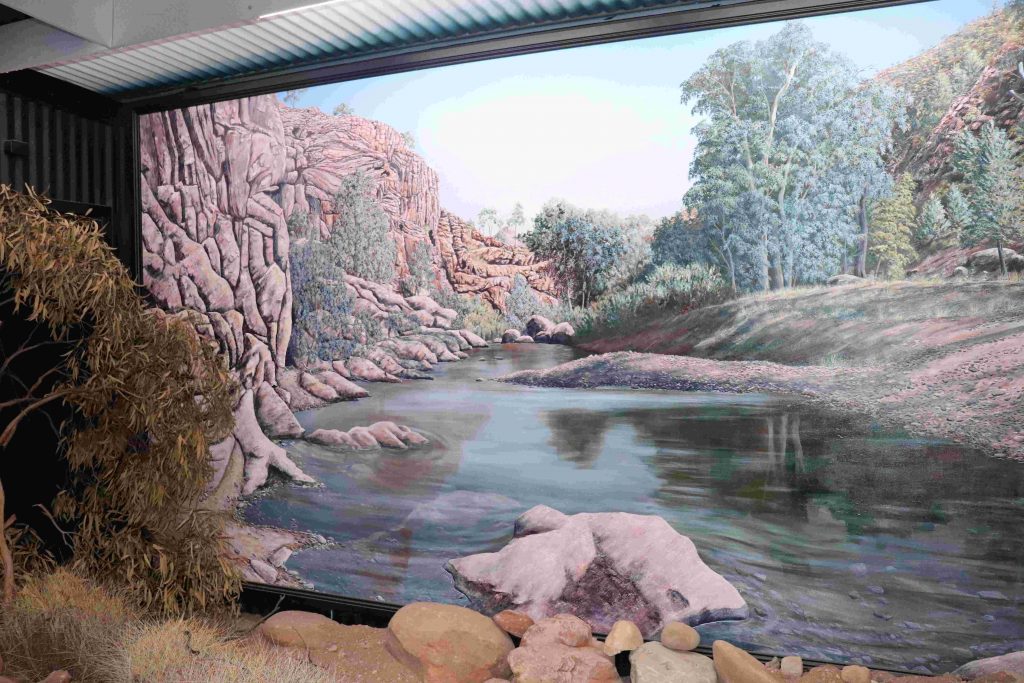
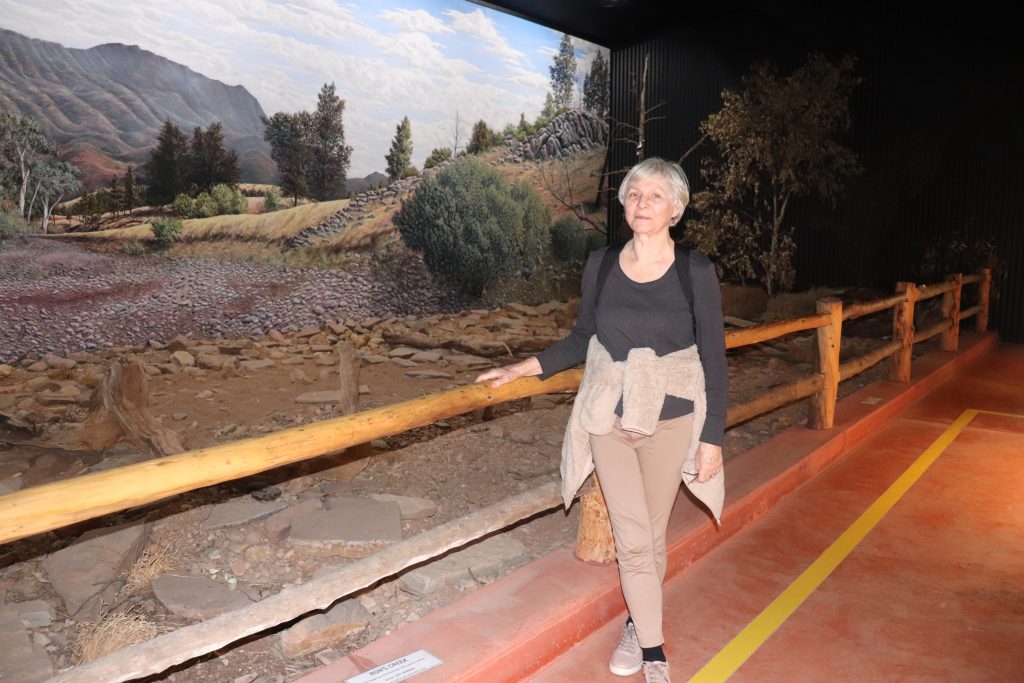
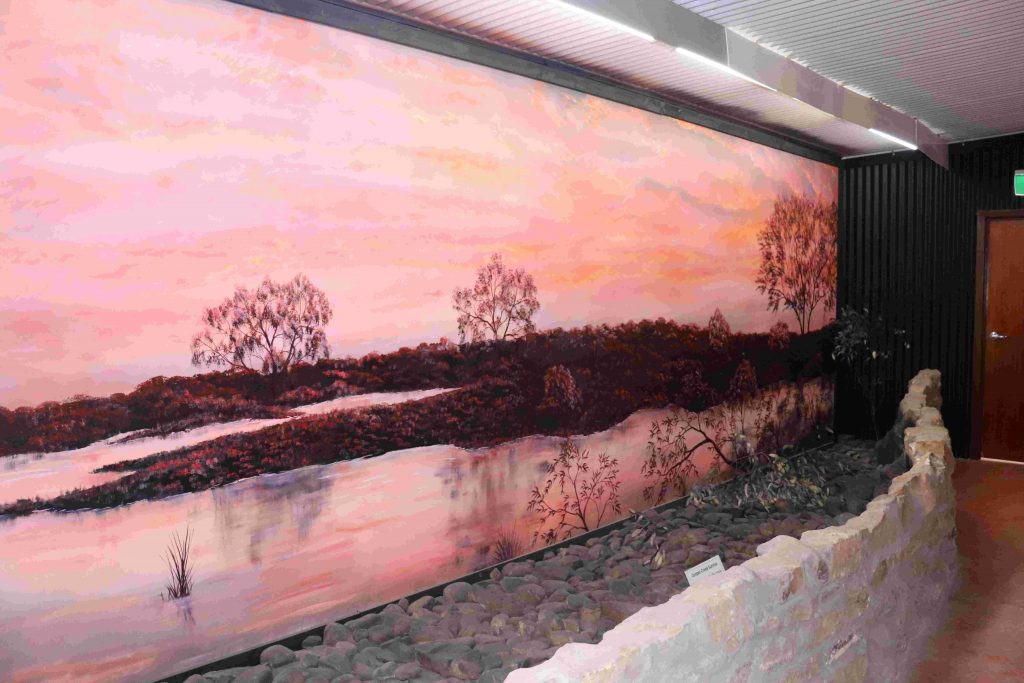
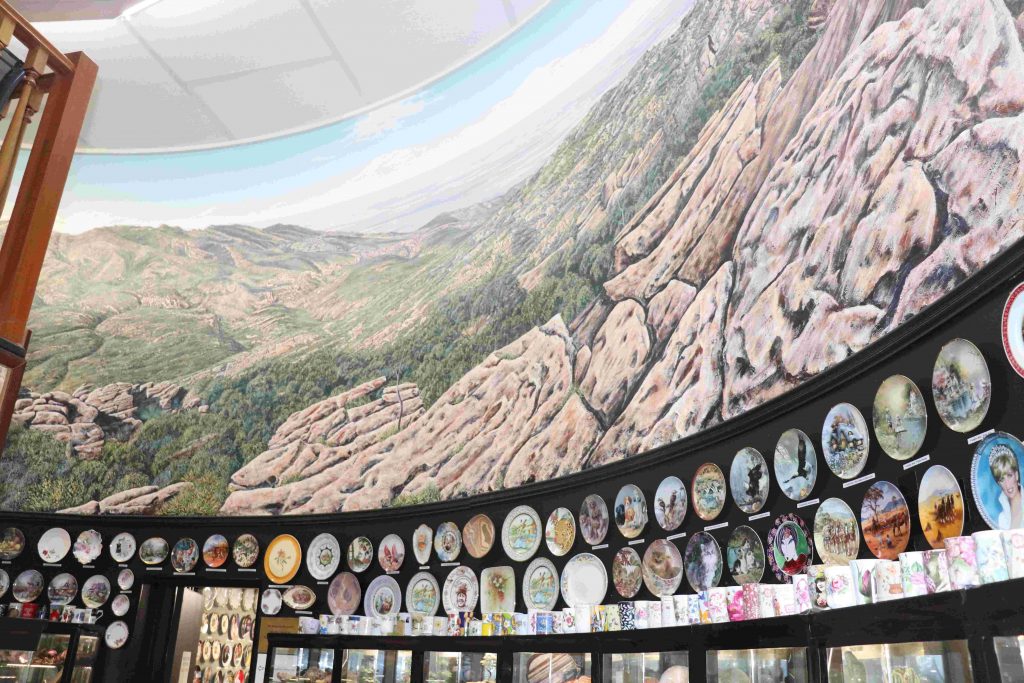
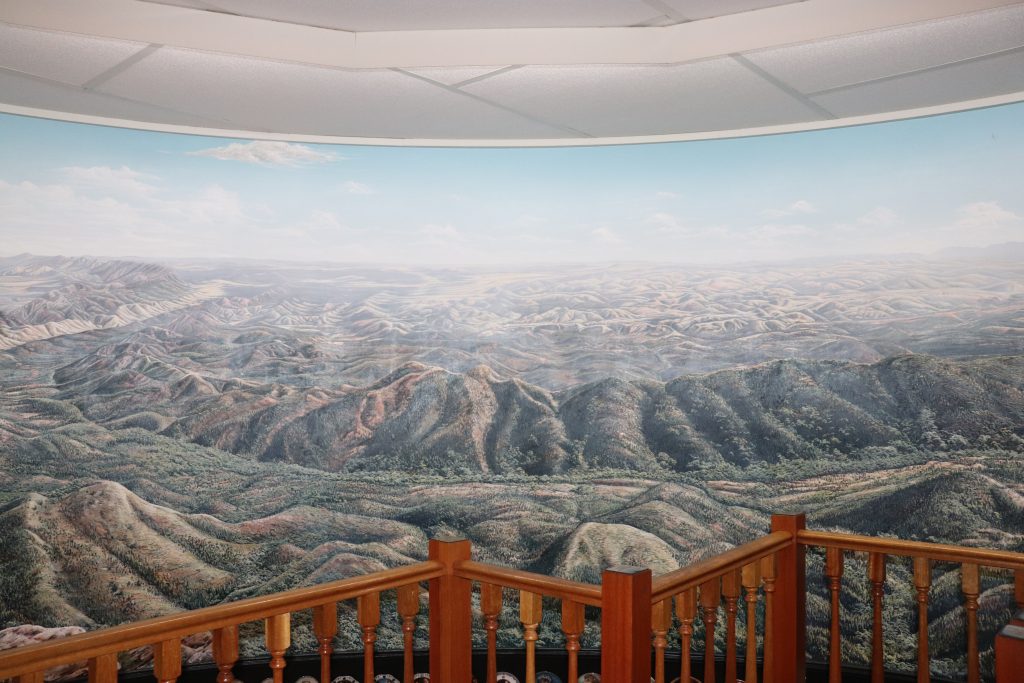
Kanayaka
After visiting Hawker, we set off to Kanyaka Station.


A weird, strangely ghostly feeling pervades Kanayaka. When we arrived, Paul gave us his version of the events concerning Kanayaka. Apparently, the colonial government thought that sheep farming in the area would be a brilliant idea. Hugh Proby set off with 53000 sheep from Adelaide, trekking all the way to Kanayaka. When he got there—with an entourage of people with a wide range of skills—they set up a sheep station with all the infrastructure needed to develop the entire region into a booming sheep farming hub.
It was not to be.
The rains came in the first year or two, until the heavens dried up. South Australia, and more intensely, the Kanayaka area, was caught in a ten-year drought; this was probably the cycle of events that extended all the way back to Dreamtime! The local Aboriginal people were sanguine about it.
Proby was not that sanguine as he gazed over the remaining 4000 scraggly sheep chewing on the grey, dry salt bush. The poor sheep probably died of thirst quite quickly, as saline-free water is needed to stay alive!
When the rains eventually came, Hugh Proby had given up hope and was preparing to go back ‘home’, when he most unfortunately was swept away by a raging river that appeared from nowhere, and he drowned.
Here is the official course of events from Wikipedia—a bit different from the story we heard on the bus!
The area was inhabited by Aboriginal people for thousands of years before European settlement. The traditional owners of the area are the Barnggarla people.. The name of the station is taken from the Aboriginal word thought to mean Place of stone.
Kanyaka Station was established as a cattle station in February 1852 by Hugh Proby. He was born on 9 April 1826 at Stamford in Lincolnshire, England, the third son of Admiral Granville Leveson Proby (the third Earl of Carysfort of Ireland) and Isabella Howard. He emigrated on the ship Wellington, which arrived on 30 May 1851 at Port Adelaide, South Australia.
On 30 August 1852, Proby drowned when he was swept from his horse crossing the swollen Willochra Creek while trying to herd a mob of cattle during a thunderstorm. Aged 24, he was buried the following day. Six years later in 1858 his grave was marked with an engraved slab shipped from Britain by his brothers and sisters; it was said to weigh one and a half tons and posed a significant challenge to transport it to the grave site. Letters from Hugh Proby to his family in England during 1851-52 in which he describes his pioneering days establishing Kanyaka, as well as his Mookra Range run (now Coonatto station), were published in 1987 in a book.[6] Proby’s Kanyaka and Mookra Range holdings were sold to Alexander Grant. He and his brother, Frederick, settled on the Mookra Range run, which they renamed Coonatto.
Under subsequent owners, and particularly under resident manager John Randall Phillips, Kanyaka station grew in size until it was one of the largest in the district, with 70 families living and working there. Because of the difficulties of transport, the station had to be self-sufficient and Kanyaka station grew to include a large homestead, cottages for workers, workshops, huts and sheds, mostly built from local stone due to limited supplies of workable local timber. The station switched from cattle to sheep, but had cows, pigs, and vegetable gardens to supply food for the residents. There was also a cemetery. Proby was not buried in the Kanyaka cemetery, as it had not yet been established at the time of his death.
Severe droughts resulted in massive losses of sheep and eventually the station was abandoned. Due to its stone construction, many of the buildings survive today as ruins and are a popular tourist attraction.
After visiting Jeff Morgan’s Wilpena panorama in Hawker, we arrived at our accommodation in time to see the sunset over the Flinders Ranges as kangaroos and wallabies came out to feed.
Wikipedia contributors. (2025, May 23). Kanyaka Station. Wikipedia. https://en.wikipedia.org/wiki/Kanyaka_Station?oldformat=true
Wilpena Pound and Rawnsley Park
On our way to Wilpena Pound, we were informed that our accommodation arrangements had changed due to the bitterly cold weather and strong winds that roared in Wilpena Pound. We headed to Rawnsley Park Station.
Rawnsley Park Station proved to be ideal for launching off north towards the Oodnadatta Track, with Lake Eyre our final destination. The mountains in the ‘pound’ became ochred and shadowy in the last rays of the setting sun—the late sunlight brought out the beautiful colours of the surrounding mountains—once as high as Mt Everest, but now a more modest height, in keeping with the ancient valleys and low-lying areas! After settling into our cabins, we shook off the travel sickness caused by the swaying bus by heading off to the Big 4 Caravan Park nearby. We were accompanied by kangaroos and wallabies that came out to feed.

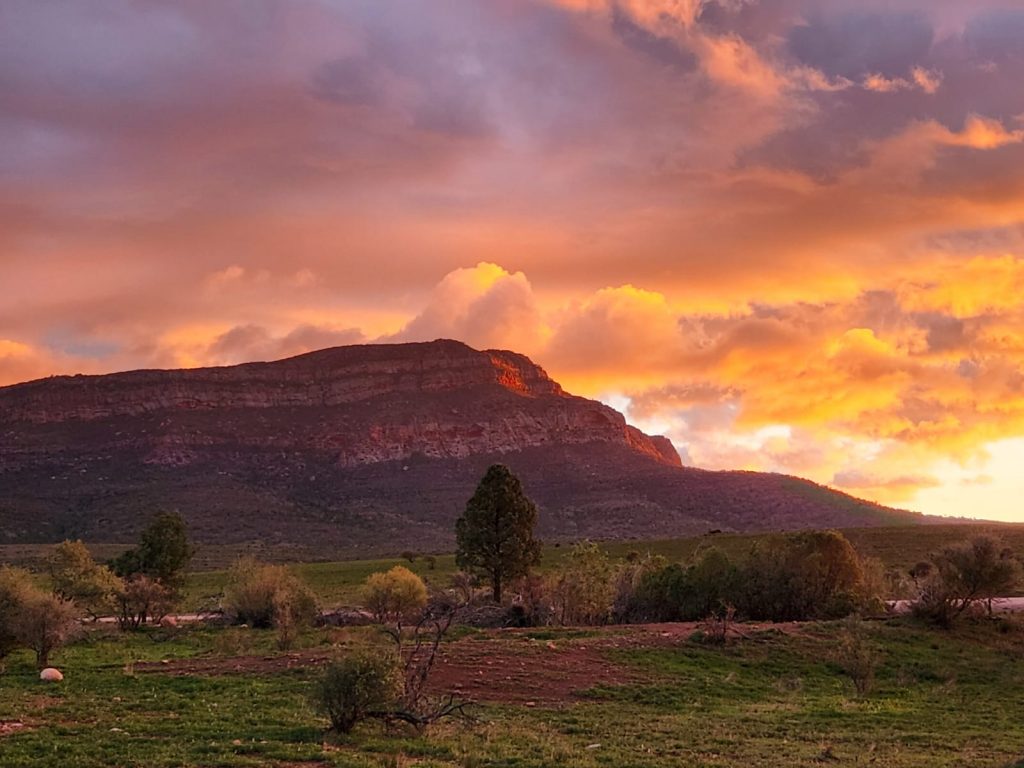
Wilpena Pound, also known by the Adnyamathanha name Ikara (meaning ‘meeting place’), is a massive natural amphitheatre located in the Ikara-Flinders Ranges National Park. Formed from ancient seabed rocks that were squeezed and uplifted by tectonic forces, the ‘Pound’ is a 17 km by 8 km elliptical crown of rugged mountains with the highest summit being St Mary Peak. It is a significant cultural site for the local Aboriginal people, a popular destination for bushwalking, and offers breathtaking views.



After breakfast, we drove to Wilpena Creek, framed by huge river red gums, in the mystical heart of the Flinders Ranges with stunning views of this increasingly arid land. We passed the Cazneaux Tree along the way. Paul just mentioned it in one of his monologues as he sped past.
The Cazneaux Tree is not only an iconic symbol of the Flinders Ranges but also of the Australian outback. The tree itself, in my opinion, is no more remarkable than the thousands of other river red gums in Australia. Yes, it stands relatively alone on a flat plain in front of Wilpena Pound. But it’s likely you wouldn’t even notice the tree driving along the nearby main road.
What makes Cazneaux tree special then?
The meaning attributed to the tree by Australian photographer Harold Pierce Cazneaux is what makes the tree well-known. Cazneaux – the grandfather of Australian explorer Dick Smith – photographed the tree in 1937 and called his work ‘The Spirit of Endurance’ based on traits he felt epitomised the tree’s survival in the semi-arid climate. In 1941, Cazneaux reflected on what the tree meant to him as his most “Australian” photograph:
‘This giant gum tree stands in solitary grandeur on a lonely plateau in the arid Flinders Ranges, South Australia, grown up from a sapling through the years, and long before the shade from its giant limbs ever gave shelter from heat to white men. The passing of the years has left it scarred and marked by the elements – storm, fire, water – unconquered, it speaks to us from a Spirit of Endurance.
Although aged, its widespread limbs speak of a vitality that will carry on for many more years. One day, when the sun shone hot and strong, I stood before this giant in silent wonder and admiration. The hot wind stirred its leafy boughs, and some of the living elements of this tree passed to me in understanding and friendliness expressing The Spirit of Australia. Dick Smith was heavily influenced by his grandfather.
How old is the Cazneaux tree?
No one knows how long Cazneaux tree has been standing stoically on that desolate plain, but river red gums can live for many centuries and potentially up to 1000 years.
I think it’s good not to know how old the tree is because it simply adds to the mystery and romanticism of its legend.
In any case, the Cazneaux tree is listed as significant by the National Trust with a diameter of 11.4 metres at the base and a height of 30 metres. Impressive, to say the least.
The tree looks a little more geriatric today than it did in 1937. Many of the upper limbs are now devoid of leaves, with new growth on the trunk instead.
One thing that hasn’t changed much (and which always impresses me) is how perilously the roots seem to cling to the eroded creek bank on which the tree sits.
Floods ravaged this creek over the Australia Day long weekend in 2021. Although they had the power to wash away the bridge leading to the information board, they did not have the power to uproot the tree. Remarkable!.

Brachina Gorge
Continuing our journey through Brachina Gorge, Paul seemed to be galvanised into ‘tour guide’ mode, and he gave us a very good account of the priceless geological treasures, crystal-clear waterholes, and the abundance of flora and fauna. Paul had saved this discourse all along, including a few excellent outback yarns which he threw in for good measure.
Brachina Gorge stands as a testament to the Earth’s ancient history, which Paul laconically threw in our direction. As we drove through this striking natural feature, we followed a dry riverbed flanked by enormous cliffs that changed colour around nearly every turn.
We travelled down time, long past the Roman Empire, going back to the beginning of time. We learned that Brachina Gorge holds one of the most complete records of sedimentary deposition in the world. On the Brachina Gorge Geological Trail, you pass rocks ranging from 650 million years to 520 million years old in a space of half an hour or so, over a distance of 20 kilometres.
We passed dry riverbeds with gums pitched in a valiant battle for survival.

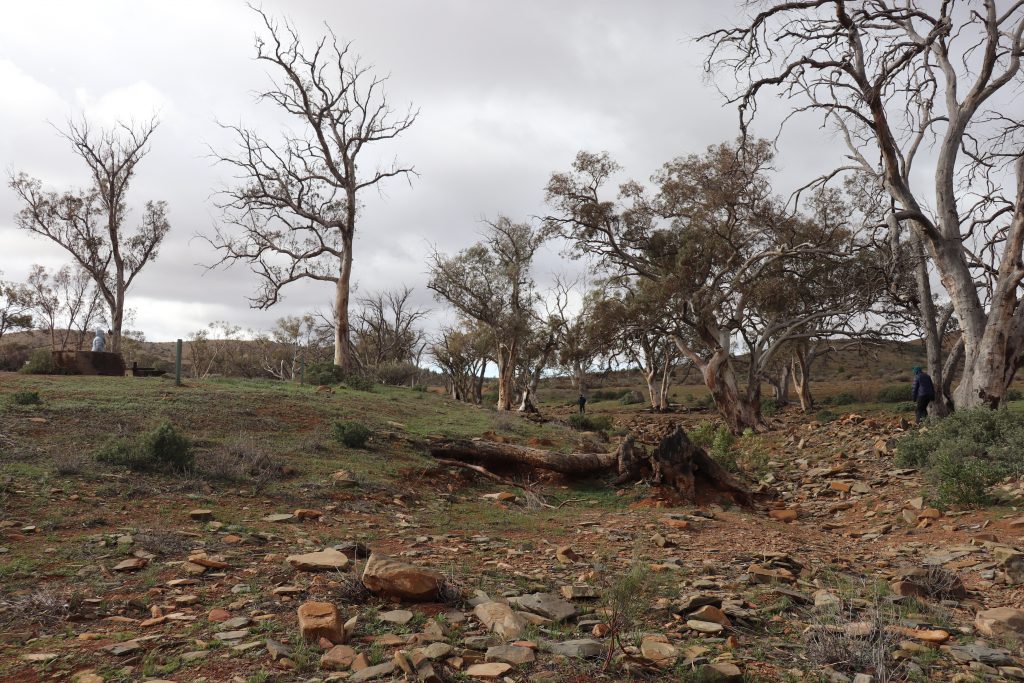
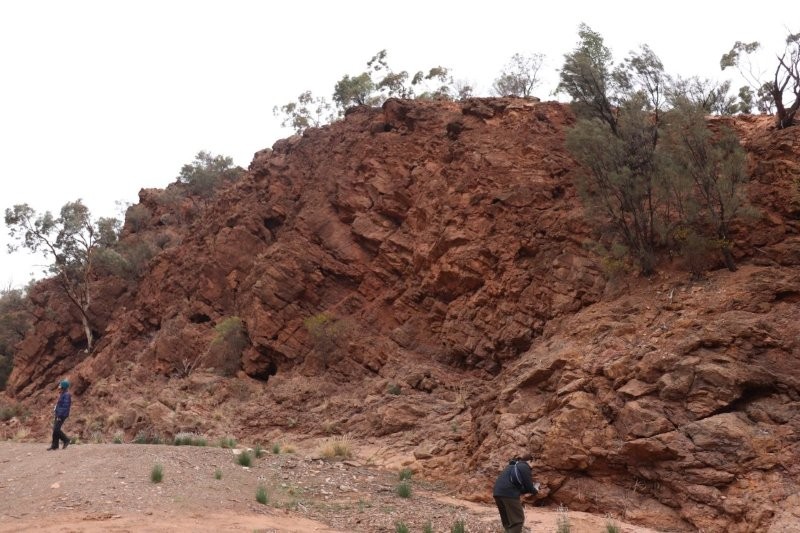
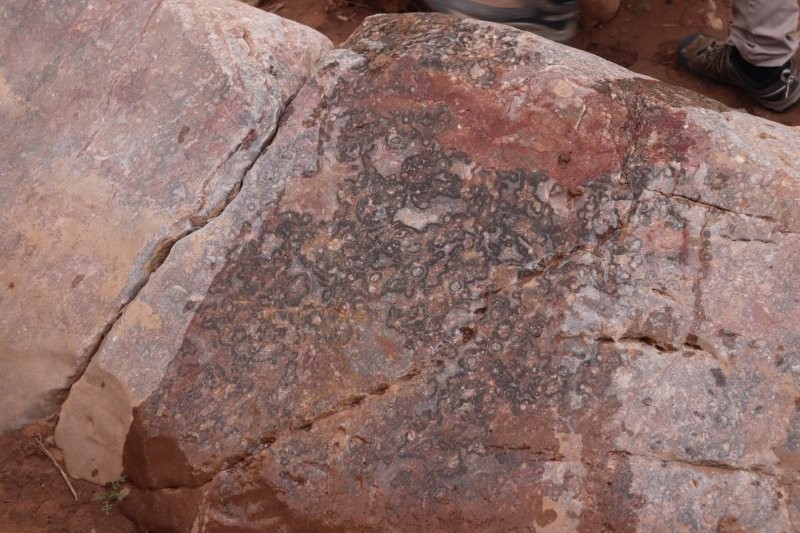
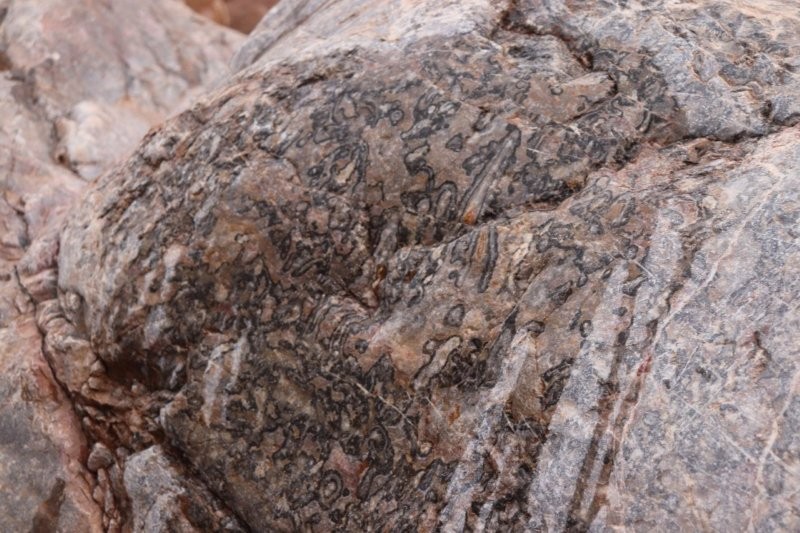

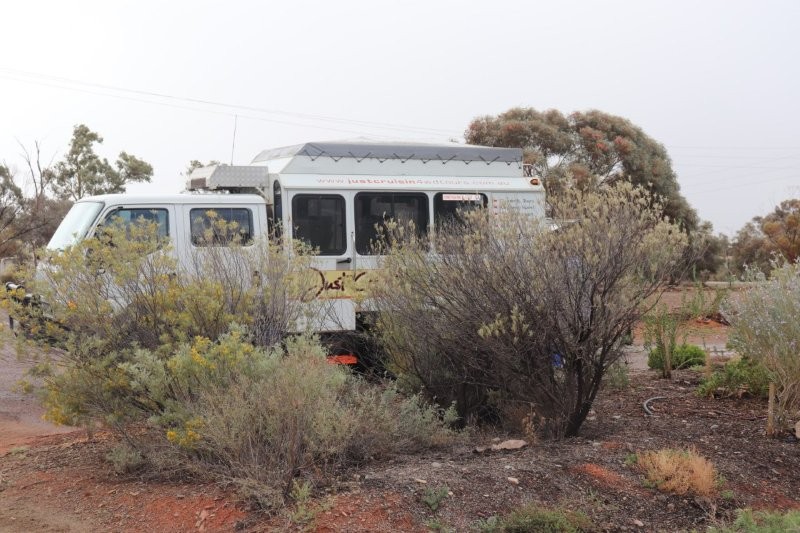
We saw Yellow-footed Rock-wallabies (a threatened species) found only in the gorge. These wallabies are distinguished by their bright yellow limbs and tail, which are hidden in the rugged, rocky terrain.

After lunch, we head to Parachilna before travelling into the desert country up the Oodnadatta Track.

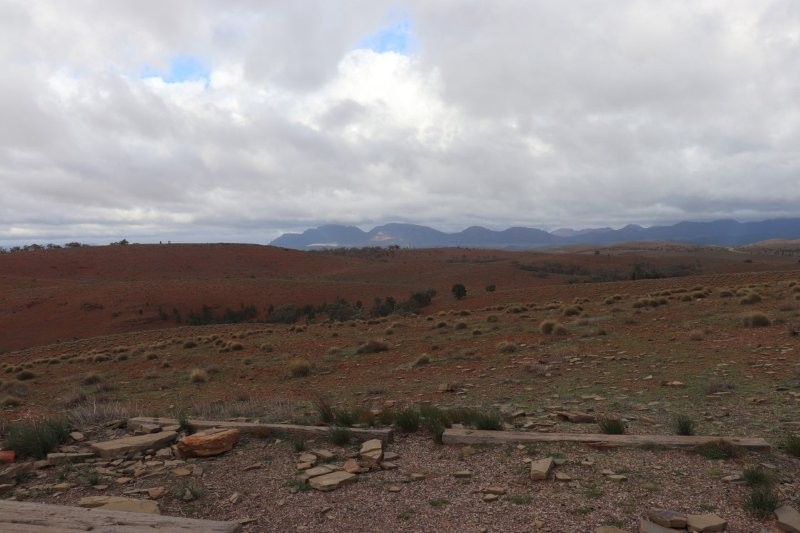
Mijneer Elferink
Paul took us to see Mr Cornelius Elferink, a ‘Sovereign State Citizen’.
‘Sovereign state believers’ refers to sovereign citizens, individuals who hold an anti-government, conspiratorial ideology that the law does not apply to them. They believe government is illegitimate and often disengage from societal structures like taxes, driver’s licenses, and other laws by using complex, false legal theories or “pseudolaw” to justify their actions. While some may act in isolation, the movement has seen growth, especially since 2020, and a small number of adherents have turned violent, leading to significant harm in communities and court systems.
Citation: Wikipedia contributors. (2025, November 1). Sovereign citizen movement. Wikipedia. https://en.wikipedia.org/wiki/Sovereign_citizen_movement?oldformat=true
Cornelius was entirely self-sufficient and living on an isolated piece of land, on land so arid and a location so desolate that most would think that the only living thing there would be the chooks that scratched around in the pebbly soil among the salt bushes.
But Cornelius’s presence was everywhere—advertising boards in his front garden that explained his worldview and information that espoused his geography and philosophy—a mix of European, Aboriginal and colonial Australian culture. Yet, Cornelius was not crazy; he was a far-gone eccentric—and entirely self-sufficient. He told Jim that he had worked as an engineer in Western Australia. When asked if he was related to the Elferinks in Enschede, the Netherlands, he replied, ‘That is possible, as he stared in a north-westerly direction towards Europe, waving away the swarm of flies encircling his face.’
That is when I saw Dedrie trying out Mr Elferi nk’s pedal washing machine.
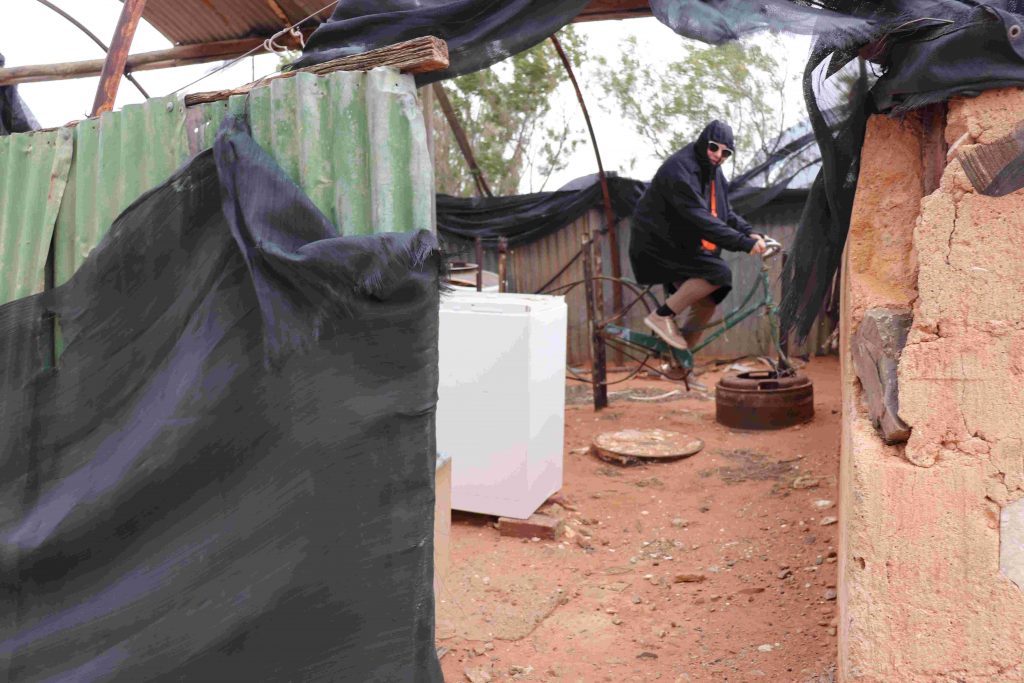
Paul had warned us not to engage in philosophy, religion or politics with him, as this could condemn us to a monologue that lasted for many hours. Jim fell into the trap, tried to tap into Mr Elferink’s knowledge of Zen, but had to extricate himself from Paul’s clutches to make it onto the departing tourist bus.
Farina Ghost Town
On the way to Farina, we had lunch—it was still bitterly cold. Could barely hold the sandwiches and bananas, my hands were shaking so badly. Dedrie managed to retain some semblance of warmth, but still managed to look like the ‘Spy Who Came in from the Cold!
The ablution block toilet door would not close and kept swinging open, exposing me to the cold wind and any inquisitive passerby. I had grown immune to surprises by that time, thinking I was back completing my military service.
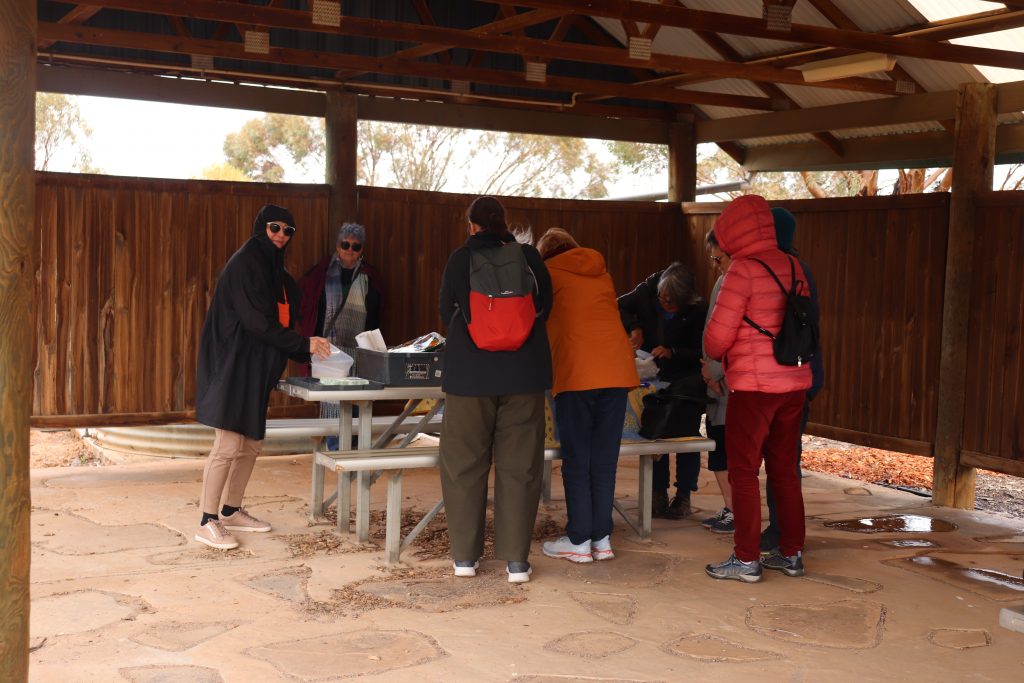
Ochre Cliffs
We followed the old Ghan railway line and arrived at Lyndhurst to explore the ochre cliffs.
We headed west on the dirt road for a couple of kilometres to reach the quarry lookout. From there, we saw a spectacular palette of rich Australian earth colours of brown, red, orange, yellow and white. The cliffs are made of ochre—an earthy pigment containing ferric oxide, mixed with clay, ranging from light yellow to brown or red. The higher the iron oxide, the redder the ochre.
These cliffs of colour tell a story that began with time itself, and they are an important part of our country’s history and the culture of the first people to occupy this land, the Yantruwanta. The extensive ochre diggings extend over a square kilometre,
Ochre pits have been used by Aboriginal people for thousands of years. They traded the ochre with other tribes by foot over vast distances and in every direction of the continent. Ochre was an extremely valuable and spiritual item and played an important role in the continent’s economy .
Weekend Post adelaide
The oldest confirmed example of ceremonial ochre is from Lake Mungo in southwestern New South Wales. Koori warrior Mungo Man was buried in a sand dune and his grave sprinkled with ochre. The date of Mungo Man has been put at between 40,000 and 42,000 years old. The ochre found with Mungo Man was not one naturally found in the area – it had been most likely traded from a different location.
Research currently underway by the South Australian Museum is revealing that ochre has its own traces of geological DNA. Science and the latest technology are able to pinpoint with great accuracy the home location of the ochre.
In modern times, ochre is used to depict Dreamtime stories through song and dance with some artists blending it with acrylic paints to create their iconic dot paintings.
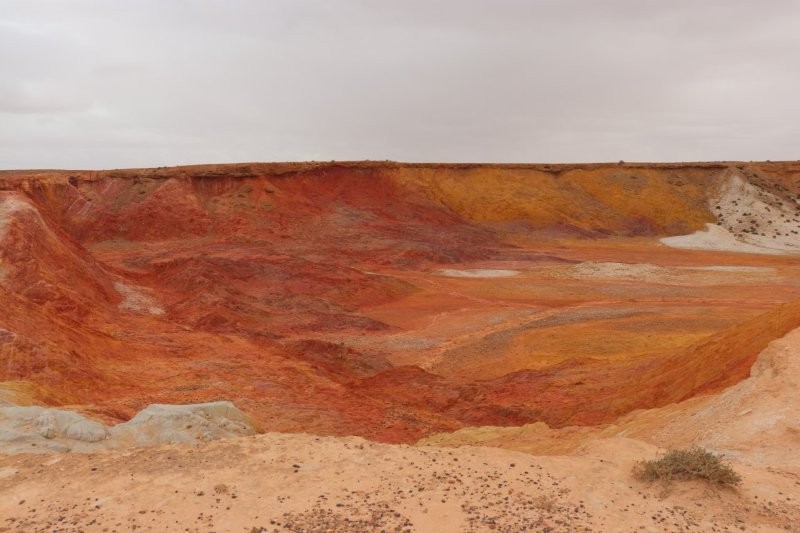
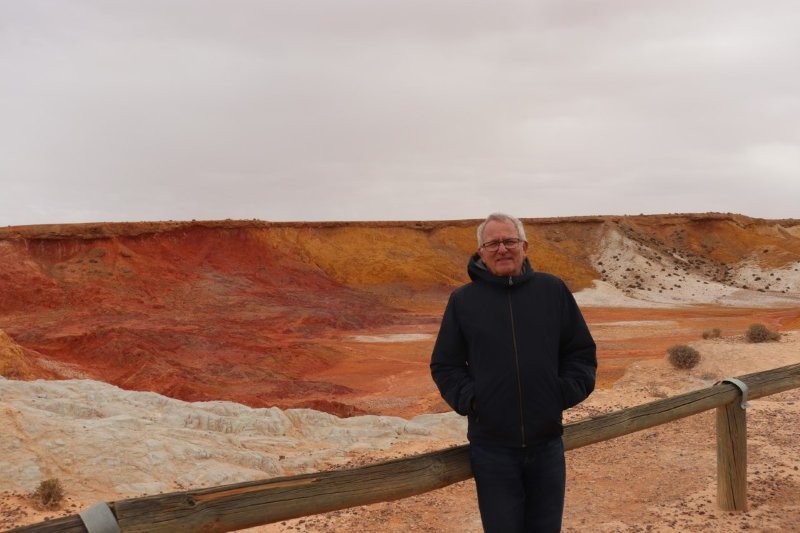
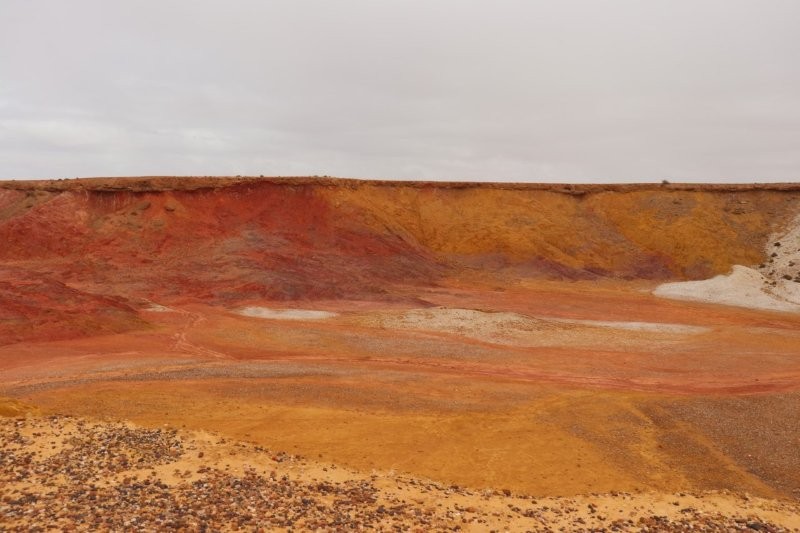

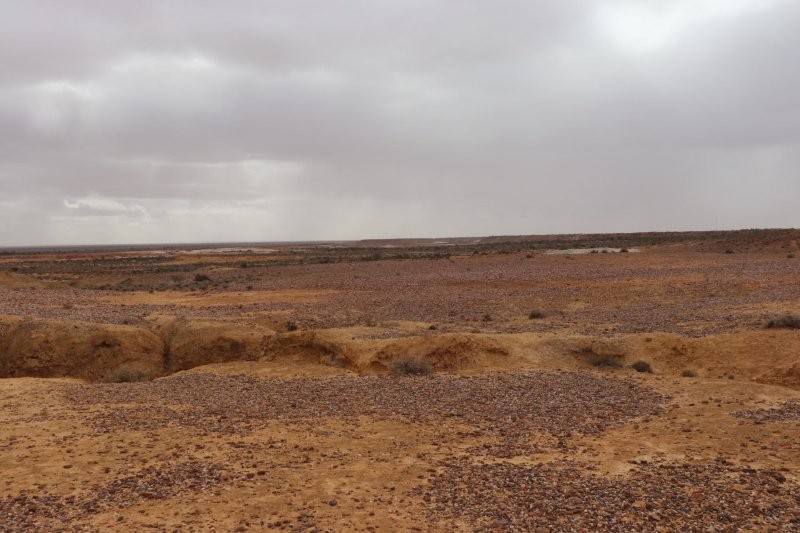
Farina
The South Australian outback has its fair share of abandoned ghost towns. Farina is one such town. We turned off the asphalt—we were still travelling on a decent road—dreading the Oodnadatta Track, where we were told that we need to travel at speed to glide over the corrugations and avoid the dreaded sand. Once bogged, twice shy!
Dedrie and I decided to wander off and visit the cemetery, where Paul said there was an eerie, haunted atmosphere. We wandered around, tramping through broken beer bottle mounds around the pub and some of the abandoned buildings, looking for those sinister graves. They were nowhere to be found as we walked through the abandoned buildings. It was obvious that drinking was the a priori ‘cultural activity’ in the town. There were surprises everywhere. I imagined that the wind howling through the deserted post office masked the chatter between the post master and one of the farmers lolling over the counter.
As we wandered down one of the side streets, a willy-nilly swept past us, exposing more jagged pieces of broken bottles. I looked into a hole in the wall—once was a window—hoping to see the ghost of a cameleer, with camel, but to no avail.
We were jolted out of our reveries when we heard Paul’s petulant shouts, ‘Jim! Dedrie! We’re leaving without you. Get on the bloody bus!’ The prospect of meeting up with some of the ghosts after dark certainly did not appeal!
In 1876, after a police trooper had been posted to the Government Gums, a ‘long neglected district’, a deputation asked for a portion of the district to be allotted as a township so that a post office might be erected; that a telegraph station be opened; and that a weekly mail service from Beltana to the north-west be set up. The townsite, on a reserve surrounding Gums Waterhole, was surveyed and on 21 March 1878, Farina Town was proclaimed.
Originally called The Gums or Government Gums, Farina was settled in 1878 by optimistic farmers hoping that rain follows the plough. The town became a railhead in 1882, but the railway was extended to Marree in 1884. During the wet years of the 1880s, plans were laid out for a town with 432 quarter-acre (0.10 hectares) blocks. It was believed that the area would be good for growing wheat and barley, but normal rainfall proved to be nowhere near enough for that. Several silver and copper mines were opened in the surrounding area.
Farina grew to reach a peak population of about 600 in the late 19th century. In its heyday, the town had two hotels (the Transcontinental and the Exchange), an underground bakery, a bank, two breweries, a general store, an Anglican church, five blacksmiths, a school (1879–1957) and a brothel. In 1909, a 1,143-kilogram (2,520 lb) iron meteorite was discovered north-east of the town.Wikipedia contributors. (2025, August 16). Farina, South Australia. Wikipedia. https://en.wikipedia.org/wiki/Farina,_South_Australia?oldformat=true
Today, little remains of the township, except for stone ruins, a seasonally operating underground bakery, and the elevated water tank of the former railway. The post office closed in the 1960s. The 1067 mm (3 ft 6 in) narrow-gauge Central Australia Railway closed in 1958.
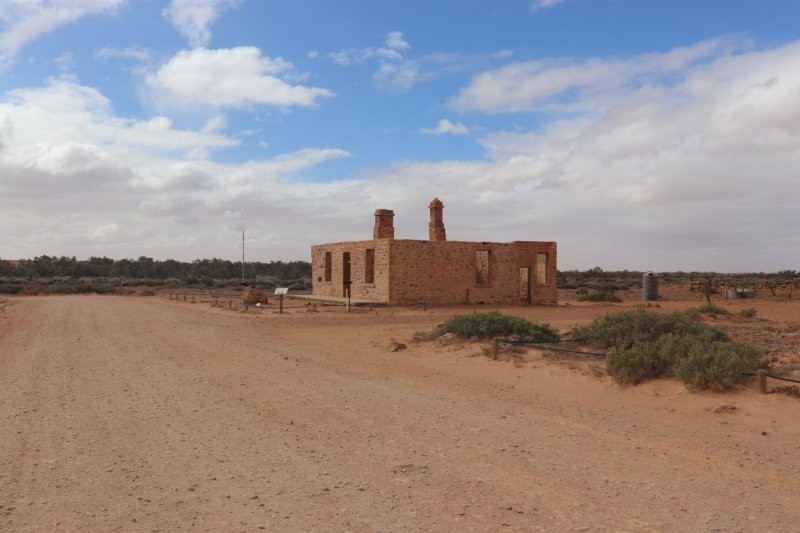

Marree
We rolled into Marree in the late afternoon, a charming little town right where the Birdsville and Oodnadatta Tracks meet. It’s a place with a fascinating history, still inhabited by the descendants of Afghan cameleers who once played a big role in its story. Marree was a bustling staging post for those large camel trains hauling goods back in the day, and it really gives you a sense of the adventure that has taken place here!

As Paul pulled up to the ‘Marree Cabins’, our first thoughts were that we had arrived at the local construction camp and that Paul had parked outside the local ablution block with outdoor dunnies! Our city sensibilities kicked in.
Jokes and banter proliferated as we realised that Paul was serious as he handed out the keys. We dragged our luggage to our cabin and unlocked the door to the strains of 1950s and 1960s music from the adjacent caravan park. The music was loud and seemed louder when we threw our cases onto the threadbare blankets on the small bed next to our main bed.
It was stuffy in the room. There were no windows, we discovered to our dismay. The bitter cold had followed us all the way up from Adelaide and an ice cold wind blew in through the huge gap in an ill-fitting entrance door. ‘We’re gonna get fuckin’ cold here, ‘ Dedrie said. ‘We’ll grab the blankets off the small bed, ‘ I optimistically said.
Just before 7 pm, Dedrie encouraged me to find my way to the local eatery, located within the local trading store. I made my way past screeching galahs and managed to get a good shot of them settling in for the night in a tree in one of the few houses next to the defunct railway station. I took some photos of the galahs, the local art on the dam wall, and the camel imaginatively constructed of steel wheels, strips of steel, springs, piping and drums.
The camel wagon was either a fabulous work of art or a derelict wagon awaiting removal by the local council. I decided that on the balance of probabilities, the wagon was a work of art—possibly awaiting some final touches.
I made my way to the trading store cum restaurant, where our fellow tourists were all seated around a very large table. Everyone was helping themselves to a most delicious plate of soup with tasty slices of home-baked bread. I dished up for myself and Dedrie, expecting her to emerge through the door at any minute.
Then bowl after bowl of lamb, pork, beef, chicken, all sorts of veggies, fruit, various puddings, and ice cream were brought in. We queued and filled our plates to the brim. I dished up for both of us. Then the red and white wine bottles were uncorked and set on the table. Everyone tucked in with gusto. The aches and pains due to a full day’s travel on the ‘Track’ were forgotten. All of us were in the highest of spirits!
‘But, where is Dedrie? ‘someone asked me. I had been staring at the open door for about half an hour, hoping to see her walk through. Then, a full hour late, she suddenly appeared at the door and found her way to us, mouthing incoherently, ‘They thought I was a frigging Aboriginal and wanted to give me a job’. Then she started to make sense, telling us what had happened. We all laughed.
She had made her way to the restaurant, as instructed by Paul, only to be distracted by the loud, frenetic music coming from the hotel, further down the street. ‘Ah, so that’s where we’re gonna eat. It should be great with such a party going!’ She entered the doors and made her way to the pub counter through the tipsy mob. The bar was unattended. She shouted, ‘Cooee, anyone home?’ She snuck in behind the counter, just as the bartender came out. ‘Hey, watcha doing here! You know it’s illegal to come here!’ The manager, hearing the bartender, came out, saw what was happening and said with a smile, ‘Ullo love, you looking fer a job?’ Dedrie said, ‘No thanks! I’m looking for Gekko Tours. Are they in here?’ The manager retracted his offer when he saw that she looked like a stunned mullet. He immediately directed her to the store-cum-restaurant down the road.

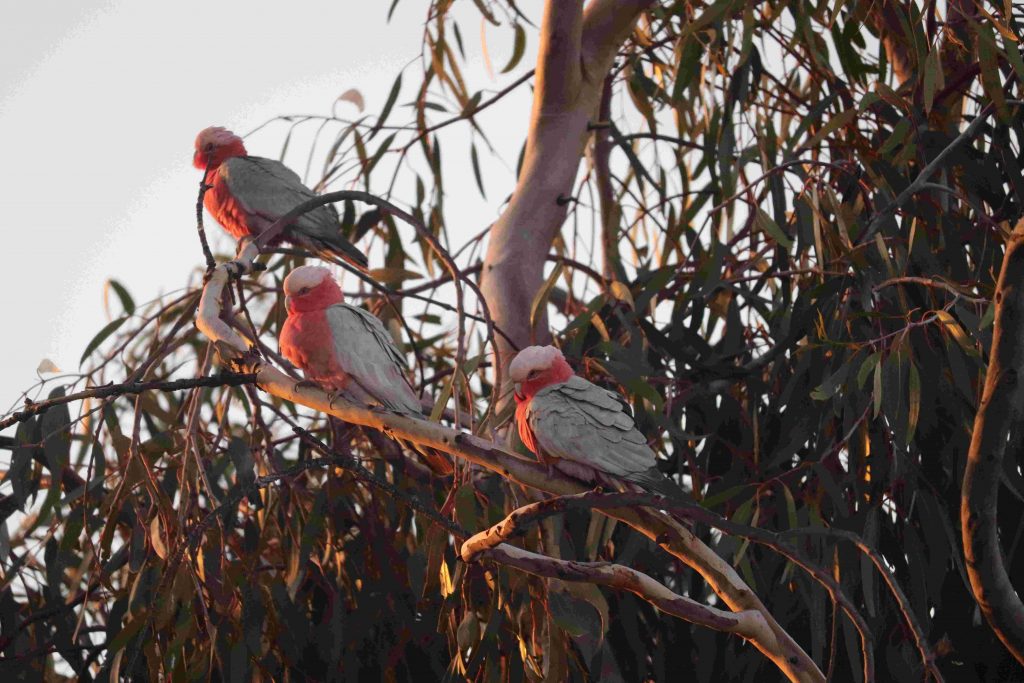
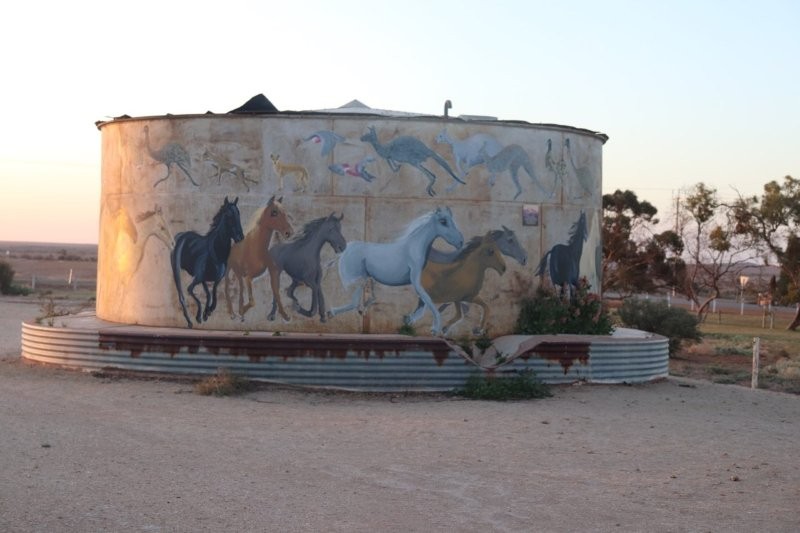

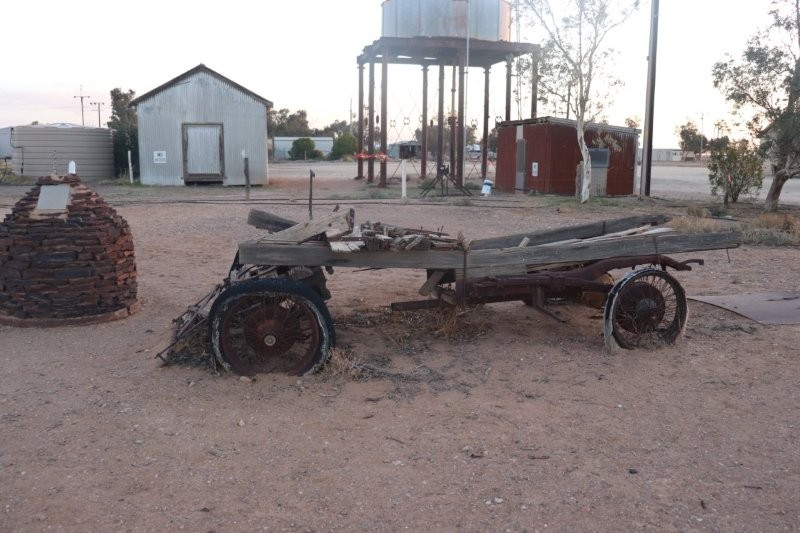
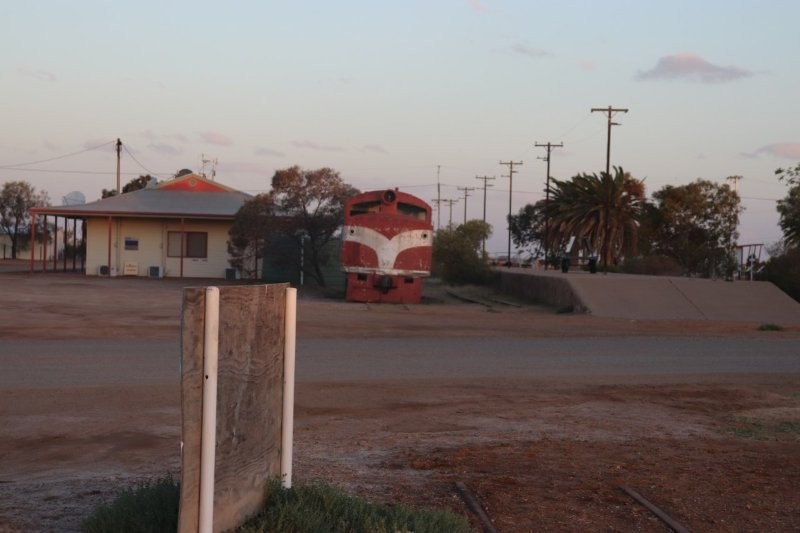
The most perplexing thing about the railway gauges was that they don’t match. Yes, the train cannot cross this road to the next track, just where I am standing.

Maree Railway Station in South Australia north’s went from being the change-of-gauge station on the line between Port Augusta and Alice Springs from 1957 to being superseded in 1981 by the alternative Tarcoola-Alice Springs line and completely cut off from rail imput from 1987. The diesel locomotives recall when the Maree line was one of Australia’s first to use them exclusively
https://adelaideaz.com/articles/
Lake Eyre Basin
We drove into the Lake Eyre Basin on the Oodnadatta Track, towards Coward Springs. Travelling along the Oodnadatta Track from Marree, we drove through the Wabma Kadarbu Conservation Park and entered the Coward Springs Campground.
Paul described the park in great detail to us. He showed us the mound springs; unusual natural features where water seeps to the surface from the Great Artesian Basin—the huge natural underground reservoir of water. This was fascinating. I had studied this in Geography in my matriculation year in South Africa.
Paul described how sand and minerals deposited to form the mounds that stood above the surrounding flat, salty landscape. It’s a pity that we did not see the lush green reeds and other plants that grow around the spring and its overflow, the tail. Paul completed his exposition of the mounds by describing how the permanent water supports a variety of life, including birds, fish and aquatic invertebrates – some of which are found only in these springs. Maybe next time!
Coward Springs
Coward Springs Campground was once a station on the old Ghan railway line. The site was constructed in 1888 and abandoned before the line was closed in 1980. It is in the Middle of Wabma Kadarbu Mound Springs Conservation Park, and its ethos is centred around conservation, with the three R’s: reducing, recycling and reusing!
We disembarked at the campground, nursing bruised and sore bottoms after becoming airborne and then landing with a bump on the surface of the Oonandatta Track. We savoured the freshly brewed coffee, farm fresh dates and some of the home-grown date products, including scones and ice cream featuring Coward Springs Dates!
The new owners of the site, Scott and Barb, have upgraded the campsite, which now includes two houses, in-ground rainwater tanks, a bore, date palms and athel pines and the most interesting outback gardens, carefully and lovingly looked after. We enjoyed their hospitality, great coffees, fresh date scones; we would have liked to visit the rail museum about the original Ghan railway line, but Paul had a lot of driving to do to get us to Marree.


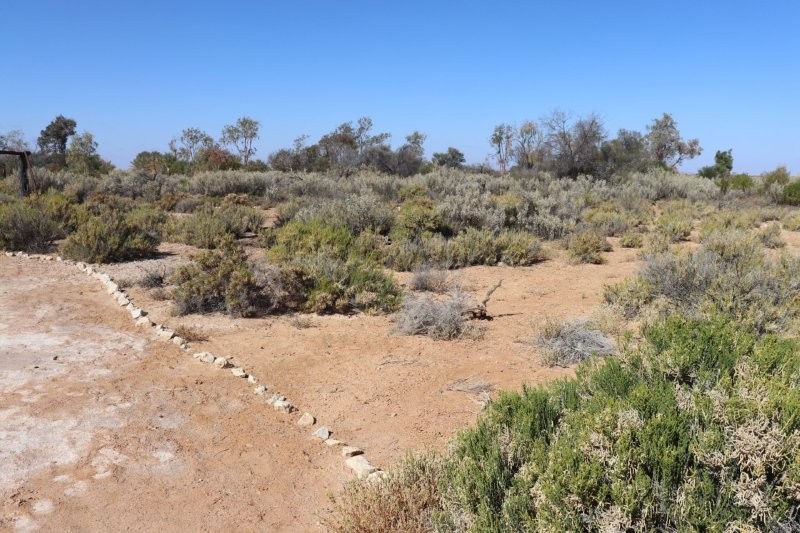

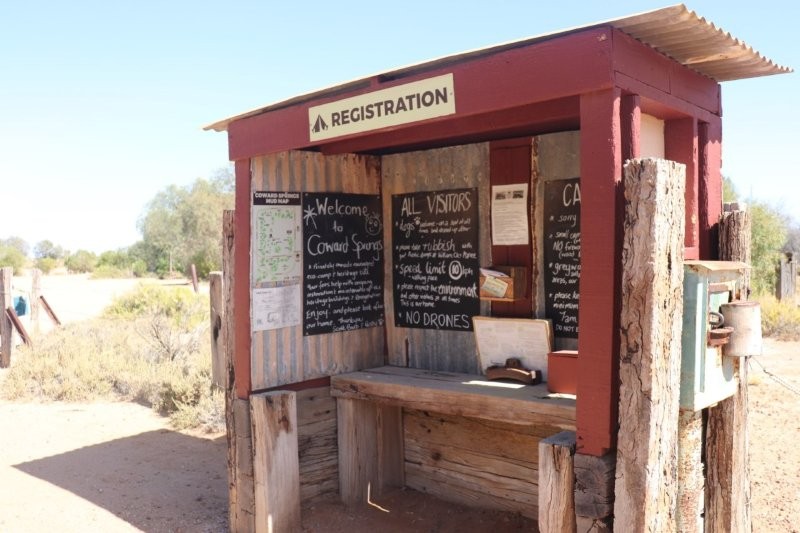
The South Australian government completed a 120 m borehole at the site in 1886 from which water from the Great Artesian Basin rose 4.6 m above ground. The salty water corroded the bore head and casing, flowing uncontrolled to form a large pool and, by the 1920s, a wetland in the dry gibber plain formed.
It was reputed to be a popular place for local residents and, at a time when the railway’s outback timetables had room for delays, train crews and passengers had time for a swim.

In 1993, the South Australian government redrilled and relined the bore, reducing the flow rate. The campground operators subsequently built a ‘natural spa’ that mimicked the old pool, from which water was directed into the wetland. We did not have time to visit the spa—a pity!
The wetland is an oasis providing water and food, shelter and breeding areas for a wide range of wildlife. We saw many birds among the palms and heard them in the well-kept flower and shrub beds. Wikipedia tell us that the site hosts more than 99 plant species, 126 bird species and numerous small native mammals, reptiles, aquatic and terrestrial invertebrates.
Apparently a school was opened in 1888, but only lasted for two years. The Coward Springs Hotel, however, was licensed from 1887 to 1953. As trains pulled into the station, passengers were given directions to the ‘pub’ and the ‘bath’ for their choice of refreshment.
We headed north to Marree, deep into the Lake Eyre Basin. The track was unforgiving. Paul negotiated every corrugation and sandy bit with expert maneuvering—that’s what 35 years of tourist guiding gives you—skills to tackle the Oodnadatta.
The countryside in the Lake Eyre Basin is primarily an arid and semi-arid landscape of dunes, rocky gibber plains, and floodplains, known as the Channel Country, which bursts into colour after infrequent rains. The area features iconic desert plants like spinifex and mulga, along with river red gums along watercourses, and becomes a temporary haven for waterbirds and other wildlife when rivers flood. We were fired up for the flight over the lake!

Lake Eyre
Lake Eyre is a stunning saltwater lake located in a desolate semi-desert region, covering an area of over 8,000 square kilometres. The lake fills with water only occasionally, a phenomenon that has occurred several times in the last three years. This happens when heavy rains sweep across Queensland, feeding the river systems that flow into the lake.
We drove from Coward Springs along the Oodnadatta Track towards William Creek, where we spent a delightful morning conversing with the semi-desert flora and fauna, before we were to take a flight over the lake.
William Creek is a tiny town, found on the world’s largest cattle station. The 32,500-square-kilometre Anna Creek Station is Australia’s largest pastoral property. Located at the halfway point between Oodnadatta and Marree, the entire town is owned by Trevor Wright from Wrightsair and has its own power supply, as well as cabins and a caravan park.
We had a great lunch at the famous Williams Creek Hotel, built in 1887. The hotel is like a giant visitor’s book. Over the years it has been adorned with business cards and hand-scrawled notes. It’s also now the only solar-powered town in South Australia.
Before lunch, we spent some time viewing the outdoor museum with a small collection of rocket memorabilia from the Woomera Rocket Range.
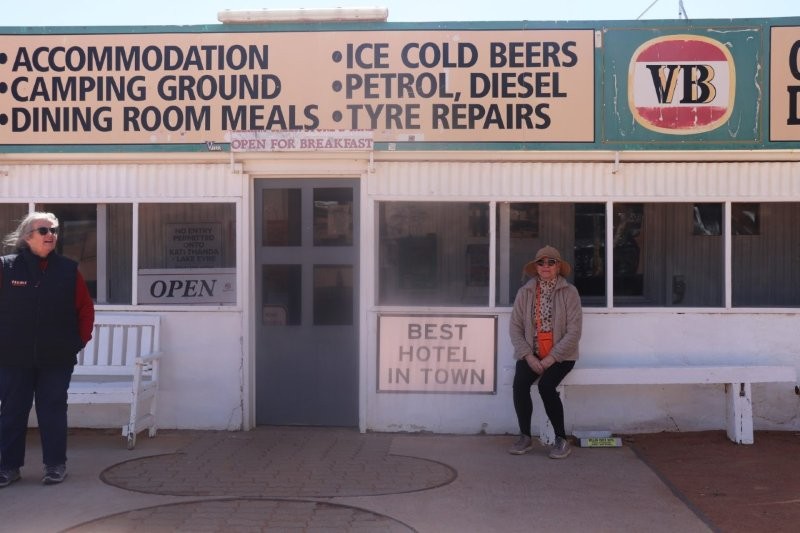
William Creek Hotel is the kind of place where you never know who you’re going to meet or the stories you’ll swap.
We were pent up with excitement about the flight over the lake. We had all seen the various ABC programmes about the opulent avian life frequenting the lake after the inflow of water. We knew about the Pelicans that had travelled from far and wide, some 1000s of kilometres to be there; they would feed on the delicious shrimps that inhabited the shores of the lake. This was to be the pinnacle experience of our visit to the Outback!
Our excitement at the prospect of seeing this once-in-a-lifetime phenomenon could not be contained as we waited to board the plane to skim the lake and descend to a few metres above ground level to savour the miraculous spectacle. There were inveterate ‘twitchers’ in our group, armed with cameras and the appropriate bird-watchers’ telescopic lenses. ‘Oh, how marvellous that the ABC had brought this phenomenon to our attention!’


But Williams Creek has many delights, as the following images tell.
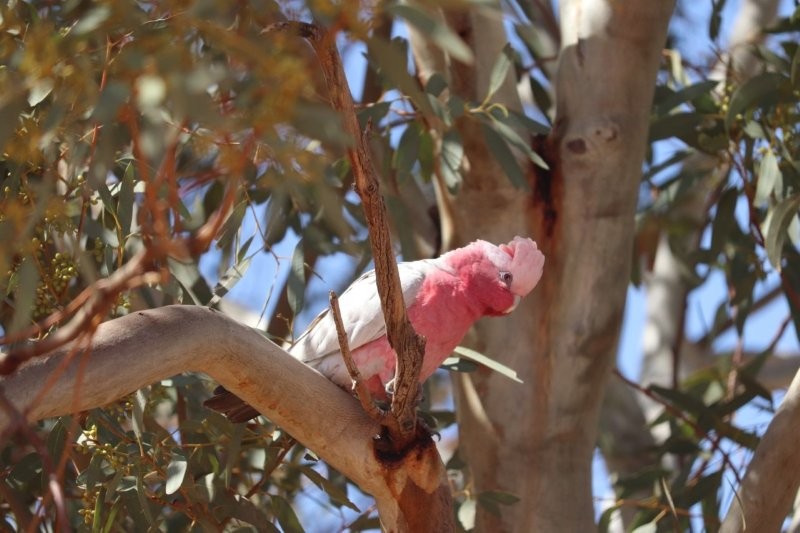

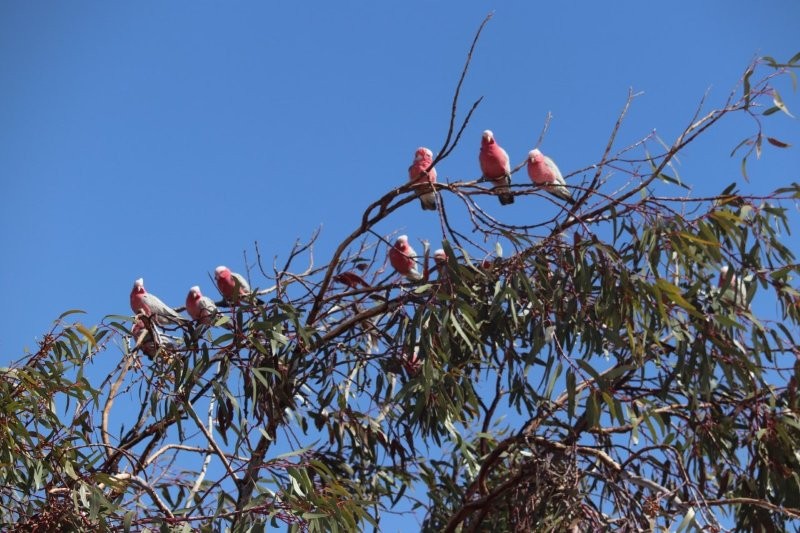

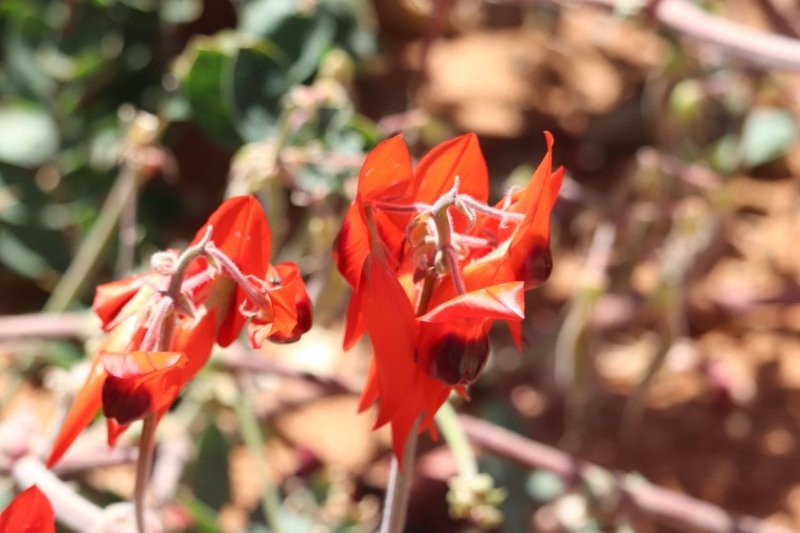
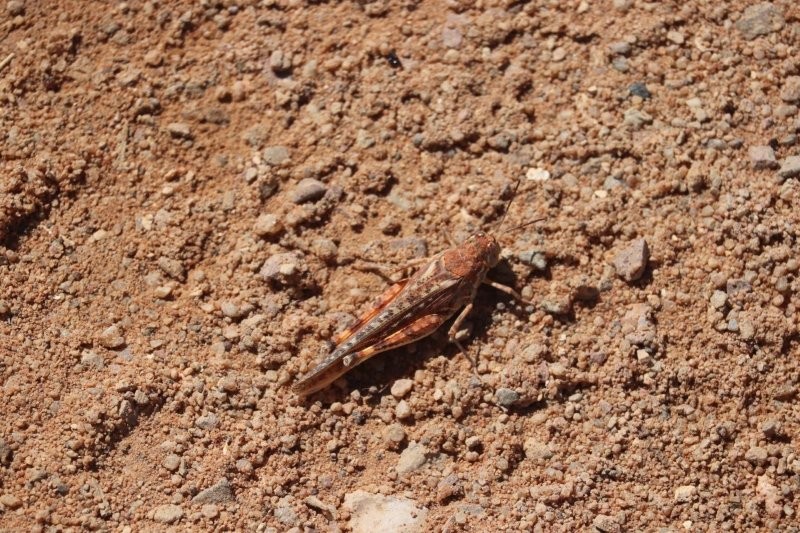
We set off to the William Creek airstrip, which boasts a bitumen runway, which provides a smooth passage for scenic flights over Kati Thanda – Lake Eyre, the Painted Hills, and the most desolate of outback scenes!

Lake Eyre reached its peak flood in 2025, filling up to cover the entire lake by August 6, 2025, after floodwaters began arriving in early May. The floodwaters, sourced from Queensland, reached a major milestone with the Cooper Creek and Diamantina River systems. The peak passed on September 26, 2025, and the water is receding due to evaporation. The Lake Eyre Yacht Club held its 25th Anniversary Regatta on the Cooper Creek in July 2025, as the floodwaters continued to flow towards the lake.
The Flight

In order to have an appreciation of our responses to the impending flight, let’s backtrack to the previous night in Marree.
After Dedries traumatic experience at the Marree Hotel, we made our way back to our cold, very cold cabin. As we opened the front door, we realised that the music from the adjacent caravan park, had become much louder—decibels louder. Dedrie went for a shower. Her shrieks and curses from the bathroom were telling. The shower water flow was intermittent; one minute the flow was luke warm, the next, freezing cold. Her misery was compounded by the cold wind blowing in from under the door.
We decided to go to bed immediately, the only way to keep warm. The threadbare blanket from the next bed was pulled over. I put in ear plugs and soon asleep, only to be woken by the thumping drumbeats and music from a 60s Beatles song, blaring even louder than earlier in the evening and punctuated by the blaring of horns. Dedrie muttered, ‘They’ve been going all night. Now the hooters have started up. I can hear people yelling’.
The music stopped. Car doors slammed and the night returned. I don’t believe anyone in town went to sleep before 2am!
The plane took off with us all securely fastened and safely inducted. The pilot was very knowledgable and answered all our questions competently.
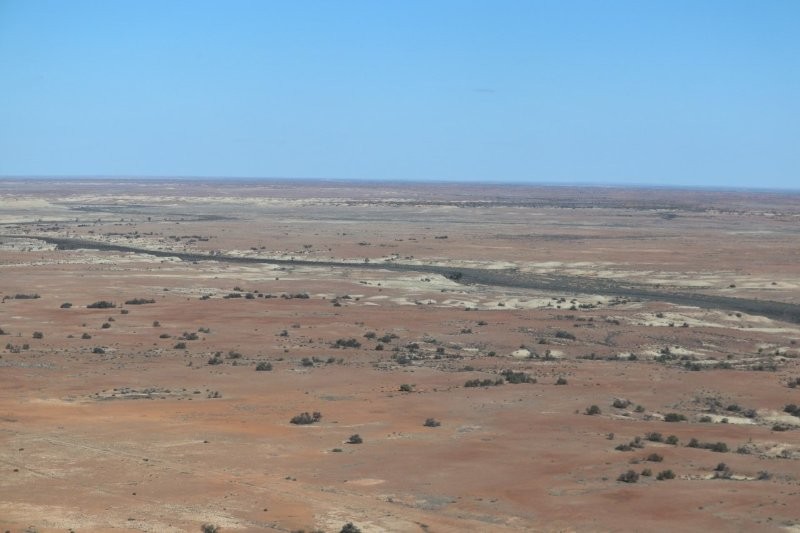



The Lake Eyre Yacht Club held its 25th Anniversary Regatta on the Cooper Creek in July 2025, as the floodwaters continued to flow towards the lake.

The pilot told us after this disappointmnet, that ‘Birds at Lake Eyre primarily eat brine shrimp, especially the banded stilt. When the lake fills, native fish and aquatic invertebrates like brine shrimp become abundant, providing food for various birds like pelicans and Caspian terns’.
After disembarking, we made our way back to the bus onto our next leg of the journey, travelling past the famous dingo fence and through the world’s largest cattle station, Anna Creek—on our way to Coober Pedy.
This is followed by lunch at William Creek. We then enjoy a captivating scenic flight over Lake Eyre North, the best way to fully enjoy the vastness of this amazing place. We then head for the opal capital of the world, Coober Pedy.
The Breakaways
The two dogs in The Breakaways near Coober Pedy are not actual dogs, but a landform known as Papa Kutjara , which consists of two joined hills—one brown and one white—formed by differing erosion rates. These formations are part of a significant Aboriginal cultural landscape, with a nearby peaked hill representing the owner of the dogs, Wati (Man). This was ‘other worldly’, never to be forgotten and utterly strange, but beautiful.
The cultural significance of the place is pretty deep. The two contrasting hills are known as Papa Kutjara to the local Aboriginal people, meaning ‘two dogs sitting down’. It took us a long time to see the nearby peaked hill, Wati, the owner of the two dogs. Beyond ‘”‘Two Dogs’ there is another formation known as Kalaya, the Emu, with its chicks represented by the white mounds at its feet.
Paul knew his geology. He told us, ‘The difference in color between the brown and white “dogs” is due to different rates of weathering and erosion. The white hill has weathered faster than the brown hill.’
Park signage told us:
Welcome to Antakirinja Mutuntjarra Lands.
Park signage
This unique landform is known as papa or two dogs.
To the traditional aboriginal people it is two dogs sitting down – a grown one and a white one. It is a mens’ story.
To non-aboriginal people the landform is called the castle or salt pepper, simply because of the similarity to the colour and shape of the landform.
The difference in colouring of the two hills, although joined, has been caused by various stages of weathering and erosion.
The white hills has weathered faster then the brown hill.
Look to your right. You will see the peaked hill which is the wati, or man, who is the owner of the two dogs.
These landforms are examples of the breathtaking scenery forming the Breakaways Reserve. Please do not climb the landforms.


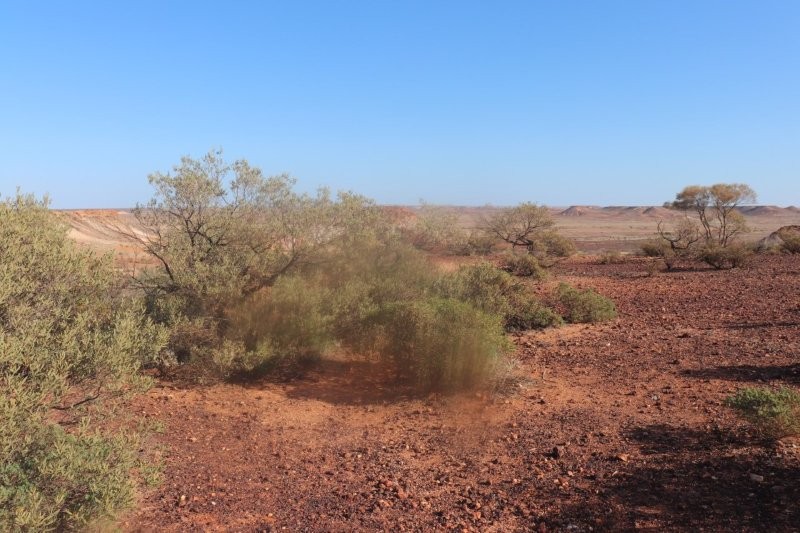


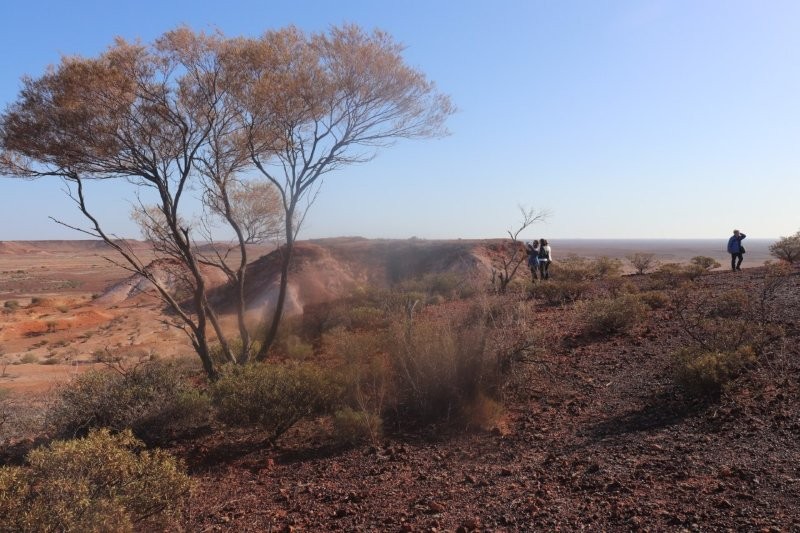
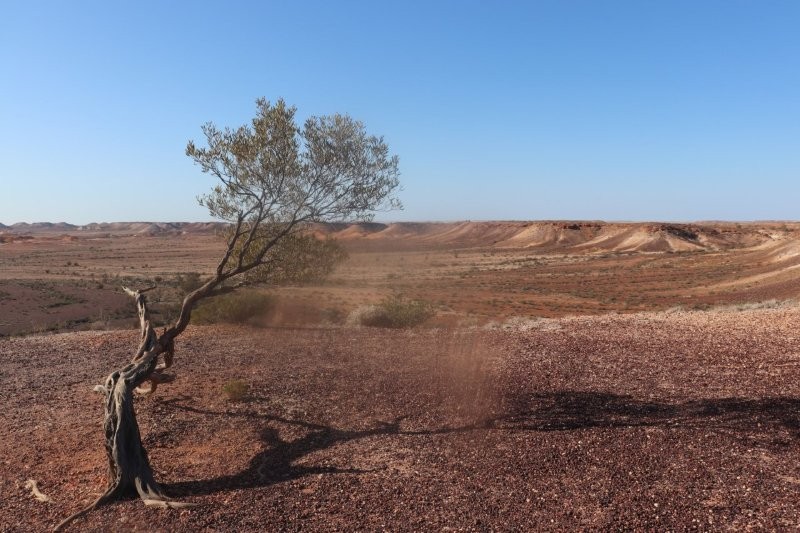
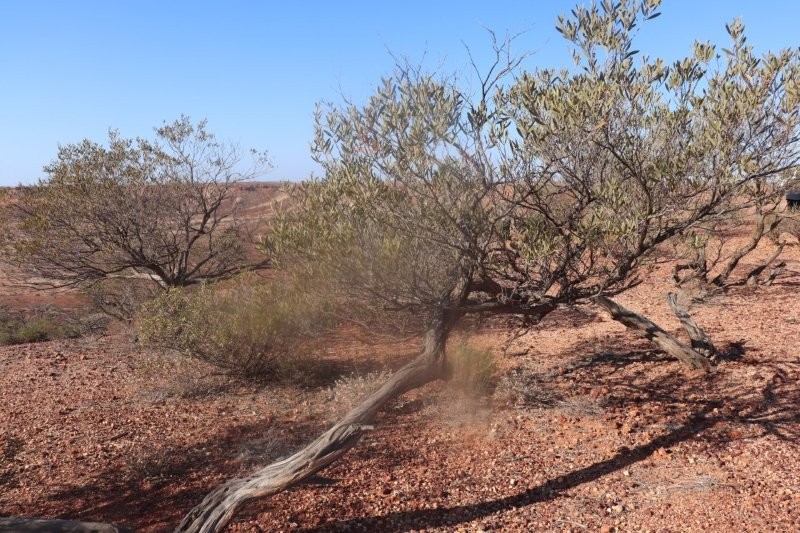
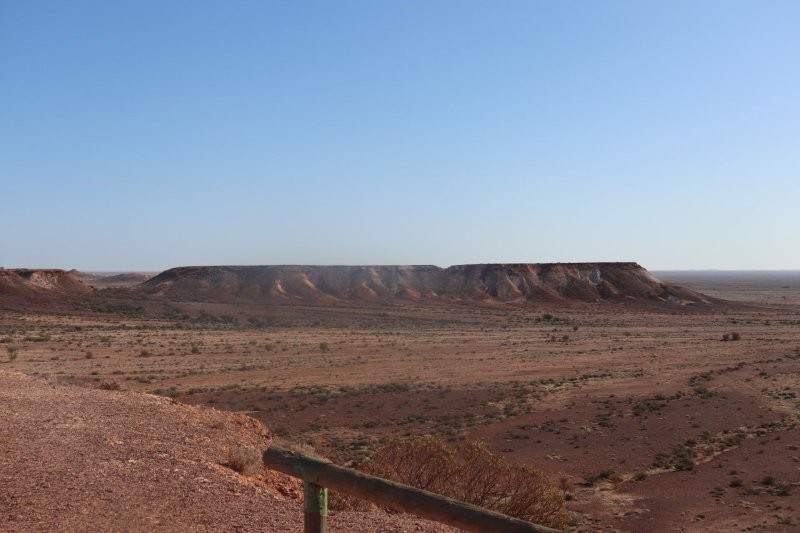


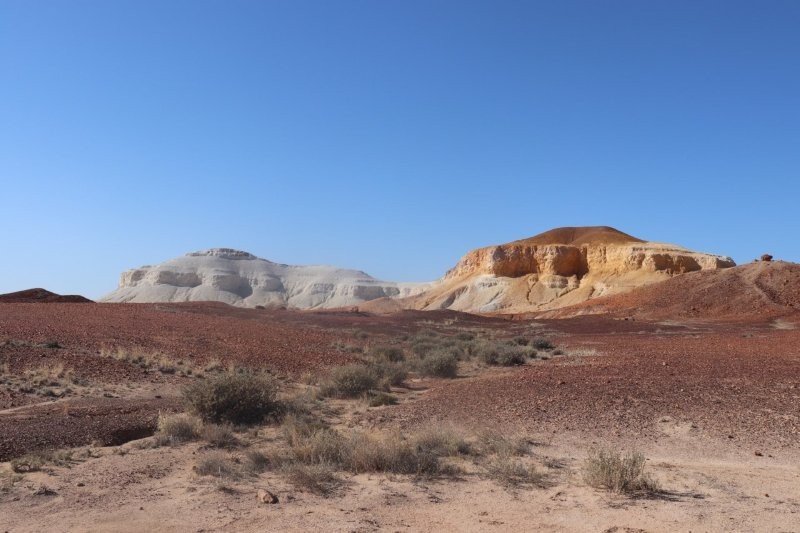
The Dog Fence
‘Just drive to the Dog Fence, take a left, and continue until the ground isn’t flat.’ These are the kinds of instructions that work in central Australia.
The Dog Fence itself is fascinating – a real marvel of scale that is only possible in a few places on the planet. It stretches for 5,600 kilometres across more than half of Australia. Made mainly of high wire mesh, it was first built in the 1880s and is still constantly maintained.
The aim is to keep dingoes out of the part of the country where most of the farmland is located.
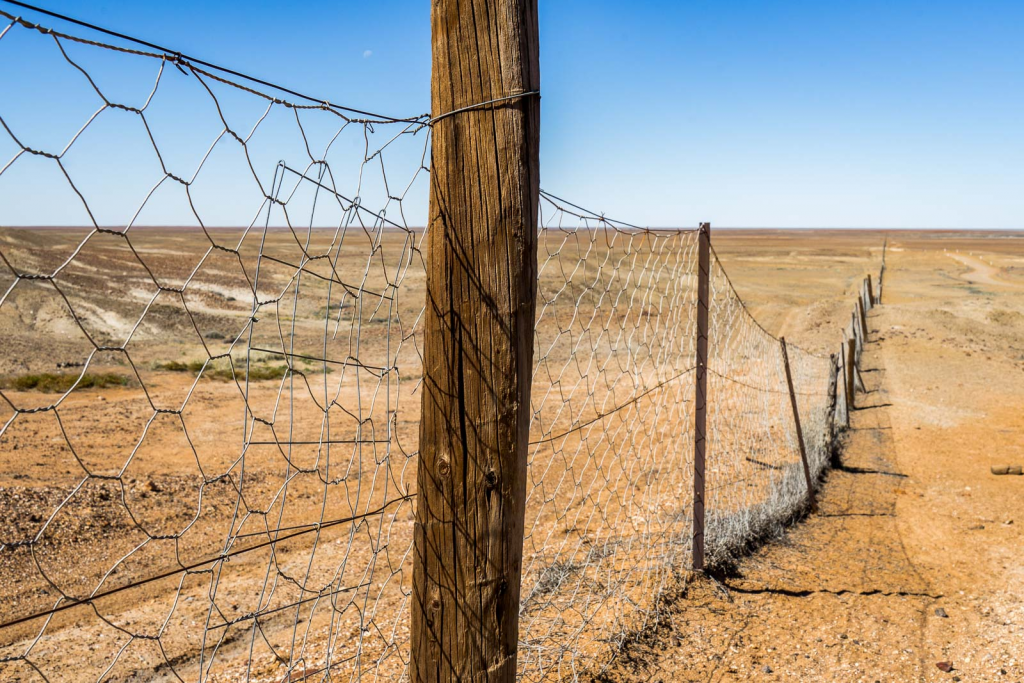
Coober Pedy
We travelled past the famous dingo fence and through the world’s largest cattle station, Anna Creek, before arriving in Coober Pedy, tired but amazed. Our accommodation was down into the innards of the earth, windowless, but into the labyrinth. The reception desk stood in an underground, carved-out room. Cool and fascinating. We had to log on differently to get to wi-fi.
The next morning we had a guided tour explaining the history of Coober Pedy and watched a 20-minute award-winning documentary presented in an underground theatrette on three panoramic screens. Coober Pedy was founded in 1915 when a 14-year-old boy called William Hutchison discovered opal. Initially named the Stuart Range Opal Field after the explorer John McDouall Stuart, the name Coober Pedy is thought to derive from the Aboriginal word kupa-piti.
We learned about the opal industry, including an opal cutting demonstration. We then visited an underground dugout home and the Serbian underground church.

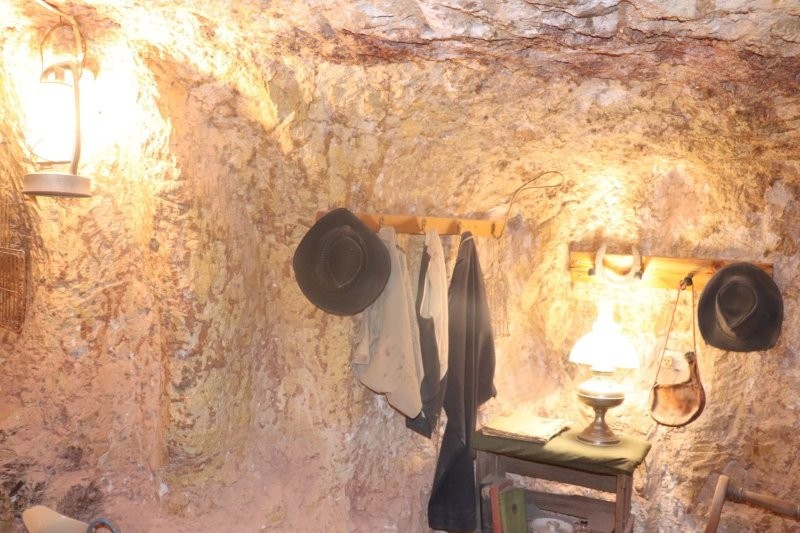
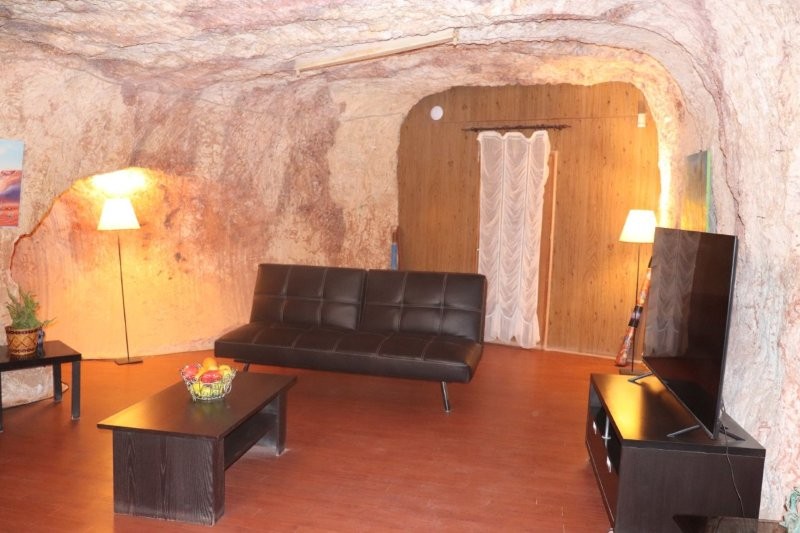
We visited Faye’s Underground Home, an iconic underground abode carved by Australia’s first female opal mine owner and industry trailblazer, Faye Nayler.
Such an underground home is unusual in most Aussie suburbs; it makes perfect sense to Coober Pedy residents, many of whom are accustomed to not only working in mines but living in cave-like dwellings to escape the sweltering desert temperatures. Faye, along with her two friends, painstakingly created the unique burrowed ‘dugout’ home, commencing the project in 1962.
Armed with nothing but picks, shovels and perseverance, the trio transformed the cave over ten years into a sprawling three-bedroom house – even carving out an indoor, underground swimming pool adjacent to the lounge area. As they built the property, the trio also continued to mine for precious gems on site. Their labour of love was completed in 1972 and quickly became a local icon.
So what’s it like inside? The interior of the home is a time capsule of retro outback style. The décor is frozen in the 60s and 70s, boasting stone walls, a vintage bar built from rocks, a lavish entertaining area, and of course that unmissable swimming pool.

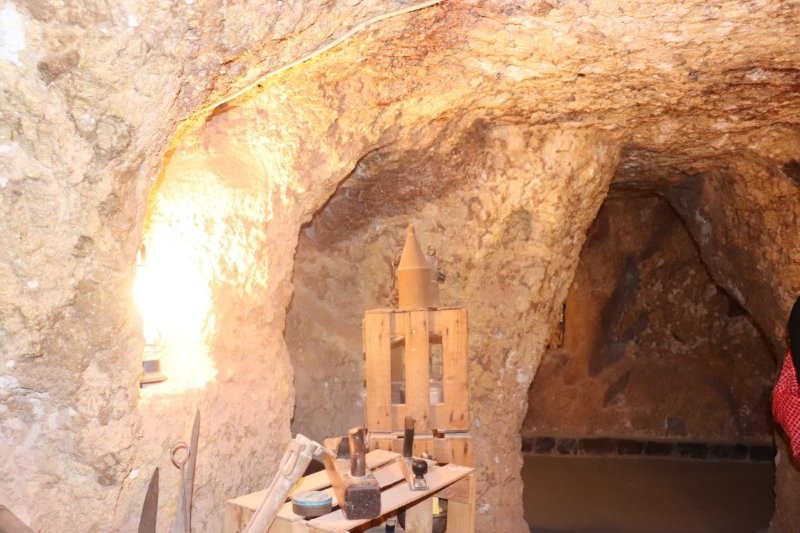





Woomera
We headed out to the Breakaways Reserve, a colourful land formation derived from the evaporation of an inland, ancient, Australian sea.
The Breakaways are made up of a series of orange, white and red eroded hills rising over the desolate rocky plane. It is thought that the landscape of the Breakaways formed through the evaporation of an ancient inland sea, triggered by the continental shift that warmed the climate. The formations of the plateau would have been a chain of islands rising out of the ancient sea.
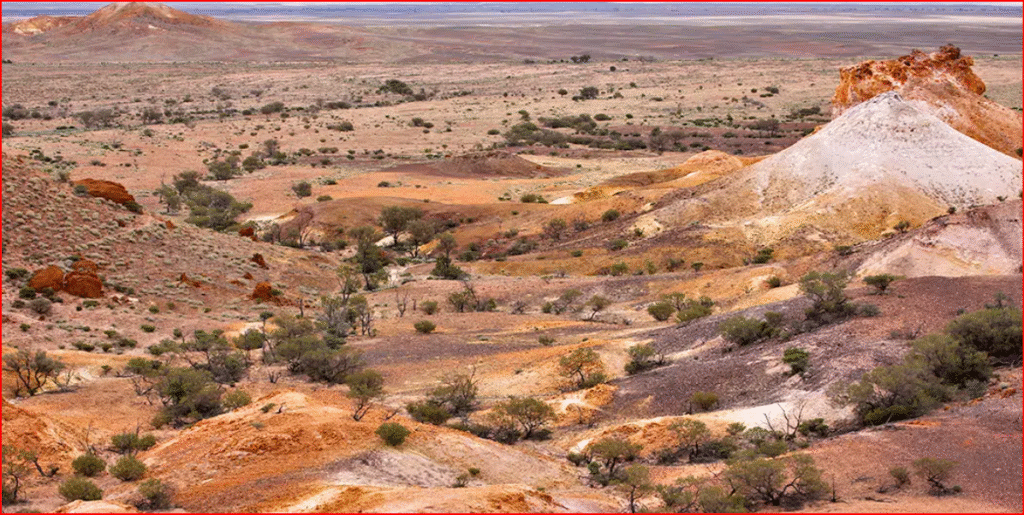
We return to Coober Pedy for lunch via the dog fence and the moon plains.
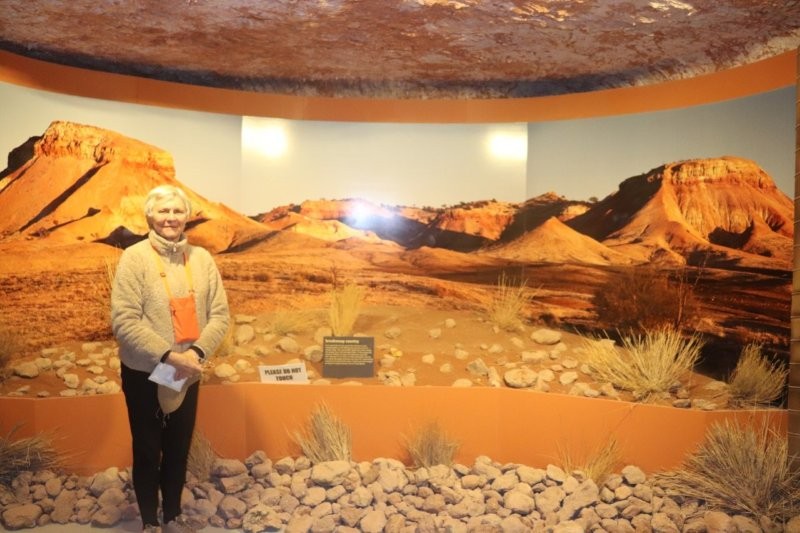
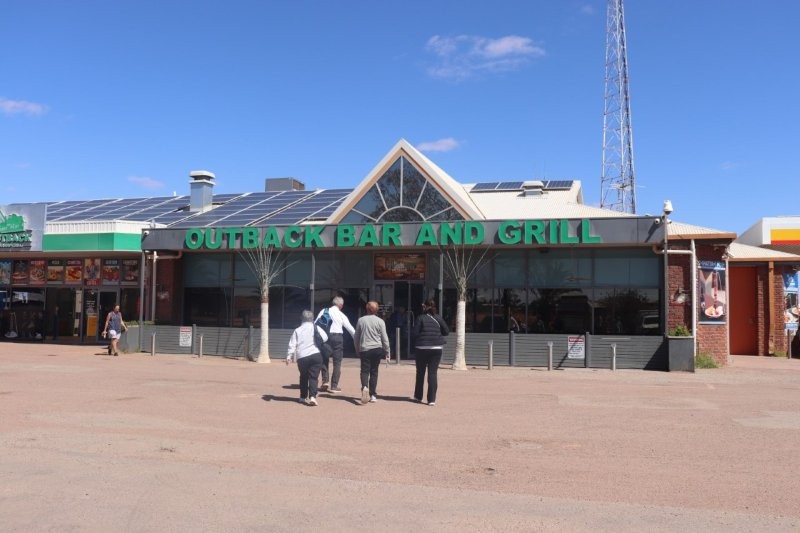
We returned to Coober Pedy for lunch via the dog fence and the moon plains. Heading along the Stuart Highway, with tracts of desert scenery stretching out as far as the eye can see.
I thought I was back in Namaqualand and Bushmanland in South Africa as we drove to Woomera which was one of the world’s busiest launch sites for testing rockets and missiles during the 1950’s and 1960’s. O/n Eldo Hotel

Our sedate expression.
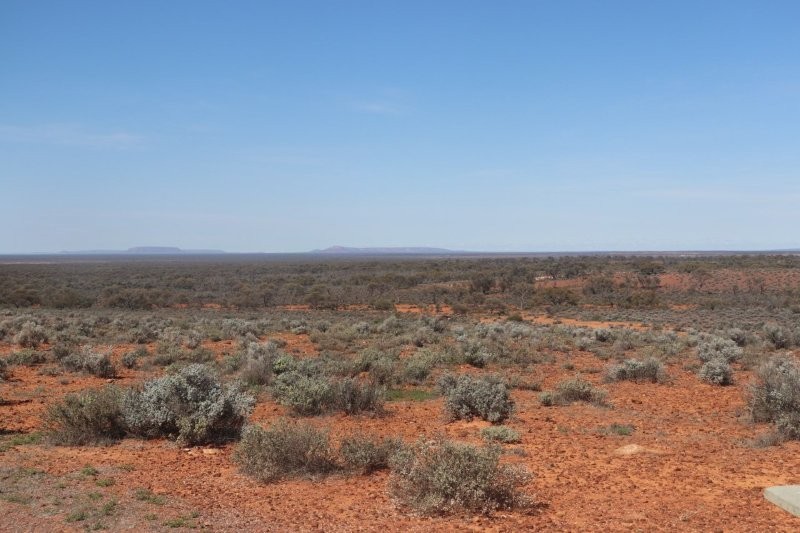
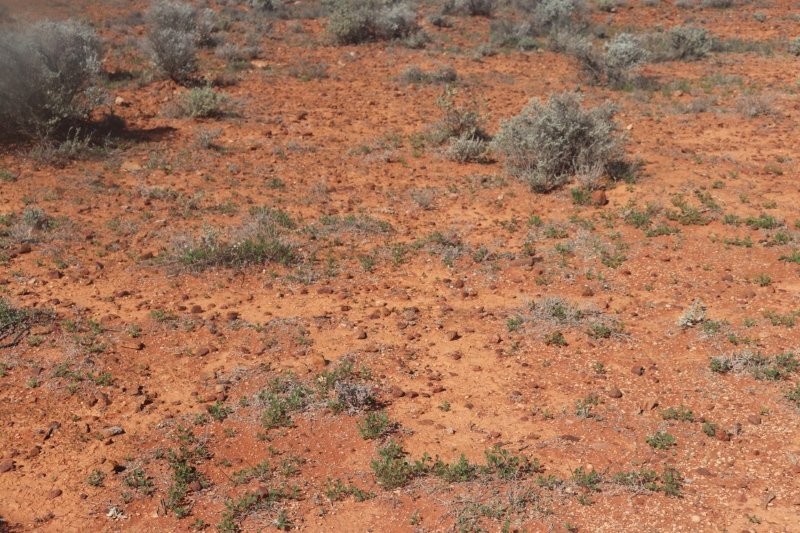
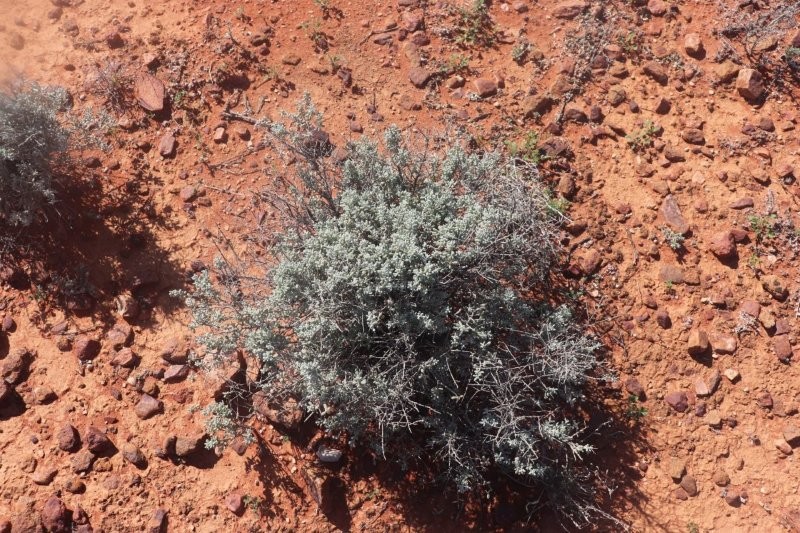
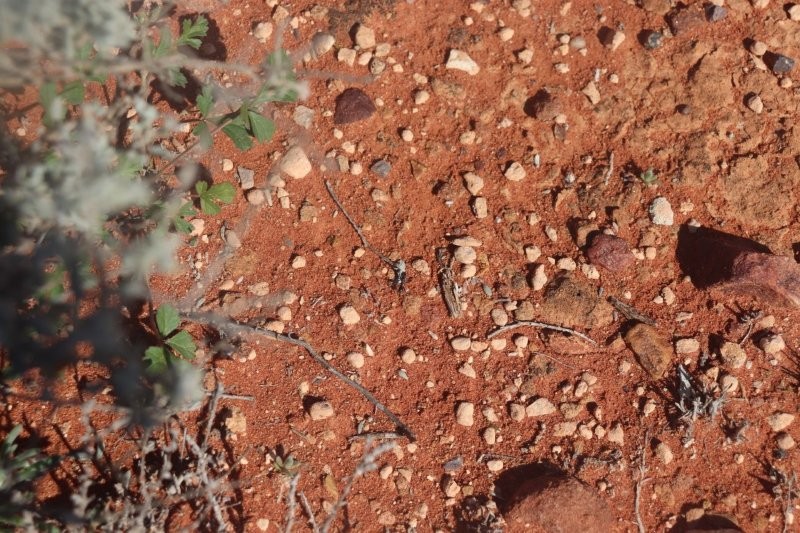

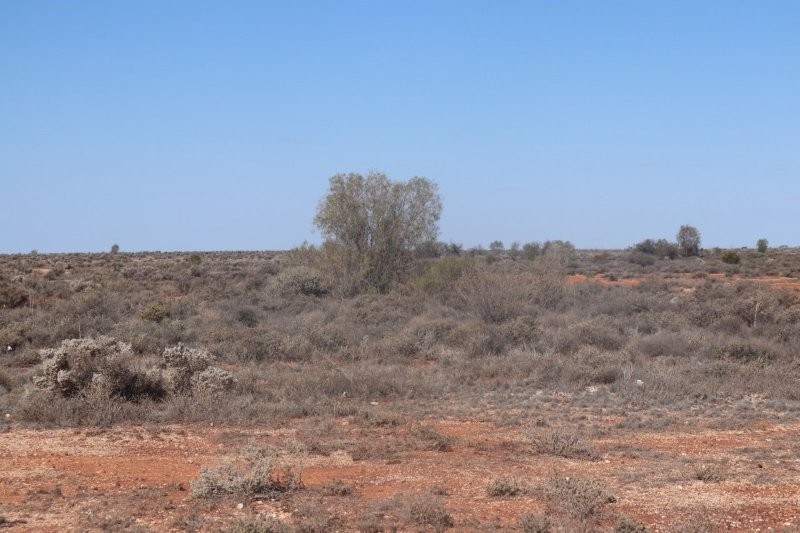
Arid Lands Botanical Garden
We left Woomera for Port Augusta, situated on the quiet waterways at the head of the Spencer Gulf. On arrival we enjoyed a lovely lunch and a stunning tour of the of the Arid Lands Botanic Gardens. The Garden showcases a diverse collection of arid zone habitats in a picturesque setting of more than 250 hectares.
The Salt Bush Plains of the Australian Arid Lands Botanic Garden are a fascinating ecosystem of almost hidden treasures. These large flat areas of low Saltbush vegetation such as Pearl and Black Bluebush hide populations of Geckoes, Fairy Wrens and some surprising life forms such as fungi and extensive colonies of lichen.
We had a very knowledgable guide, who held us spellbound.

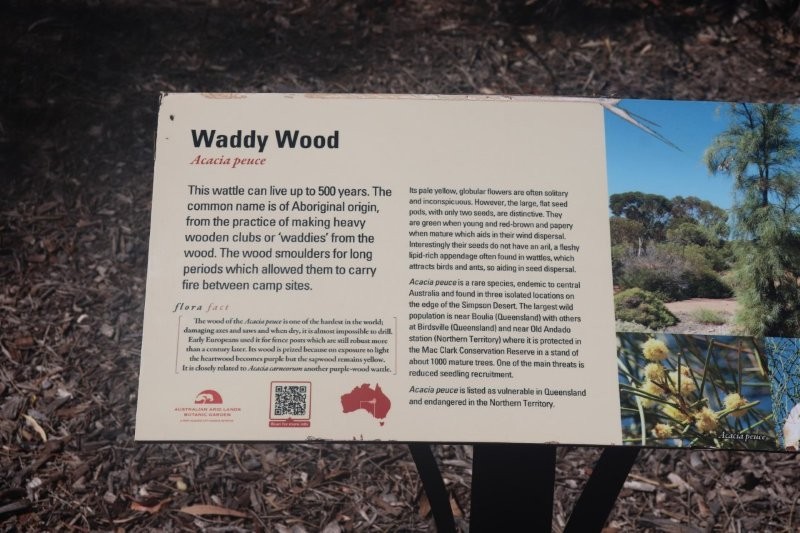
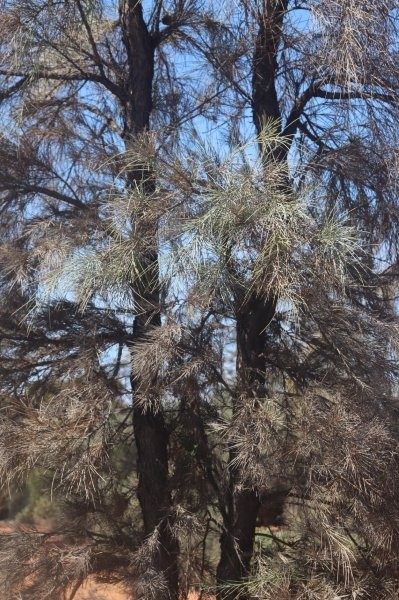
Indigenous Australians used the hard and heavy wood of the Waddy tree to produce clubs or waddy.
The tree is host to various butterflies and their larvae and also provides protective habitat for birds, such as grey falcons and desert finches. The foliage is often chewed by insects, but saplings were eaten by grazers, such as cattle and diprotodons. Pastoralists used the tree to make highly durable and termite-resistant fenceposts and stockyards from the timber.
Waddy Wood
Wikipedia contributors. (2024, December 10). Acacia peuce. Wikipedia. https://en.wikipedia.org/wiki/Acacia_peuce?oldformat=true
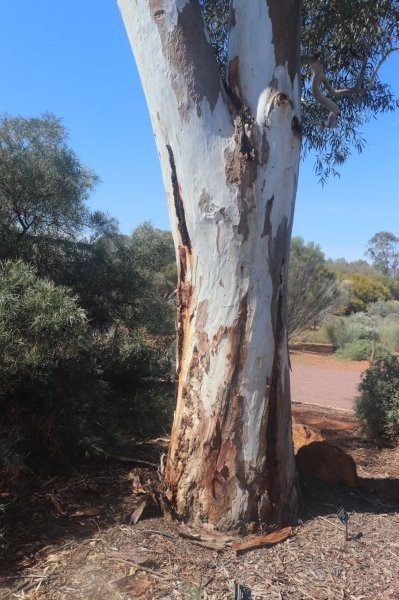
For Aboriginal peoples, the River Red Gum (Eucalyptus camaldulensis) is deeply significant for providing physical sustenance, cultural practices, and spiritual connection to Country. It offers a vital source of food, medicine, and materials for tools and shelter, and its presence indicates water sources and fertile land.
The tree also holds stories of ancestral journeys and serves as a symbol of strength and connection to the landscape, with historical evidence of cultural practices like scar trees, burial sites, and ceremonial places found in Red Gum forests.
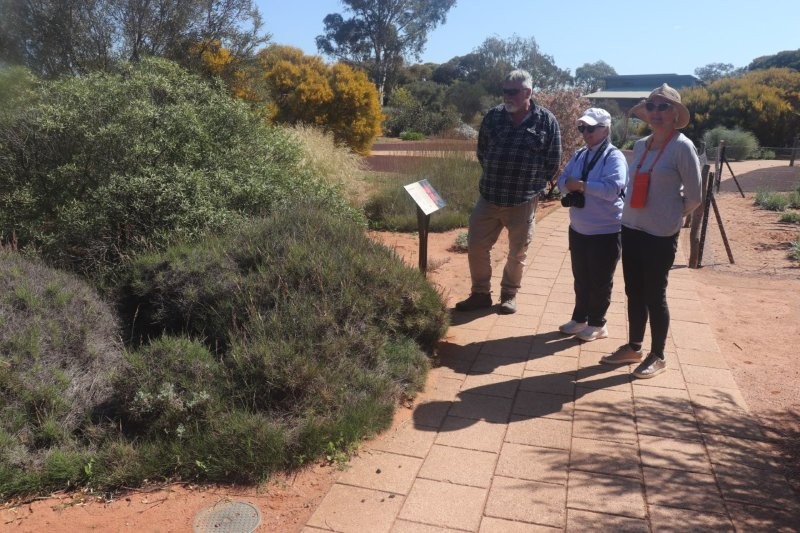
Spinifex is rooted in Aboriginal culture and spirituality, particularly in the Great Victoria Desert. The Spinifex is prominent in Dreaming stories (Tjukurpa), passed down through art, oral traditions, and practices. We found it fascinating and pretty thorny! Our guide told us

In Aboriginal cultures, the Mulga tree (Acacia aneura) is a vital resource, providing food from its seeds and honey ants in its roots, materials for tools like spears and boomerangs from its durable wood, and medicinal uses for its resin and smoke. The tree’s ecological significance also makes it a key cultural marker, with its lifecycle intertwined with seasons and ceremonies, and its presence often defines significant landscapes and areas.
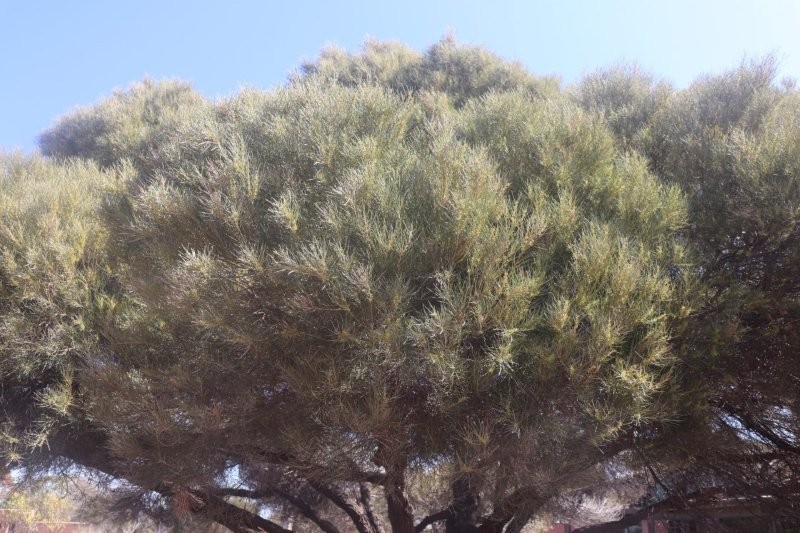
Aboriginal people across Australia historically used the hard fruit of Hakea plants as food for the Yellow-tailed Black Cockatoo and the plants were generally significant within broader Aboriginal plant knowledge systems and connections to Country.
All indigenous plants, including Hakea species, are deeply connected to Country and are central to the social, cultural, and spiritual lives of Aboriginal people. The presence of plants reactivates cultural stories and offers a way to understand the living culture and knowledge systems of Aboriginal peoples. Aboriginal spirituality views all living things as having meaning and purpose, forming a web of interrelationships between people and the natural environment.



